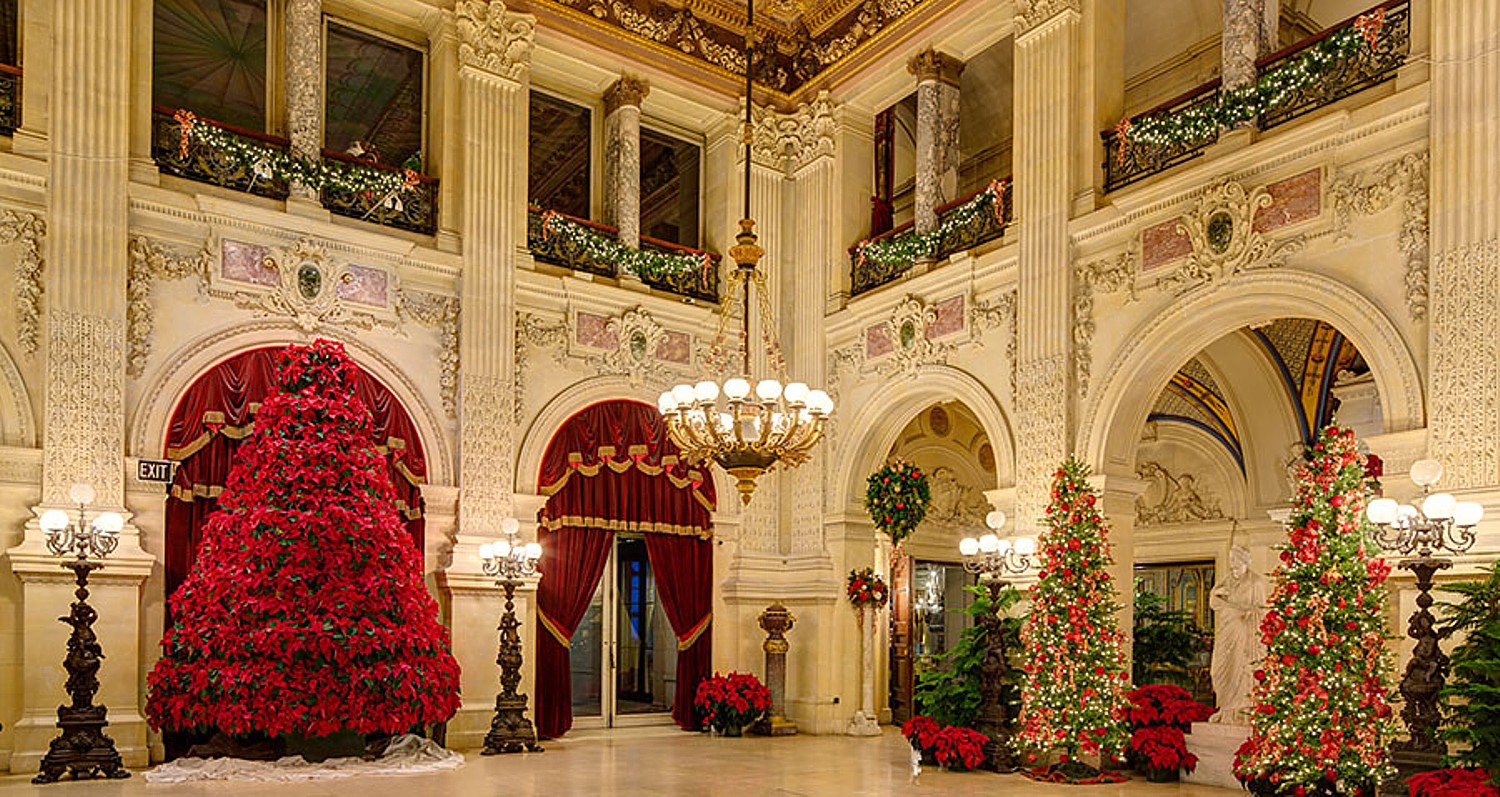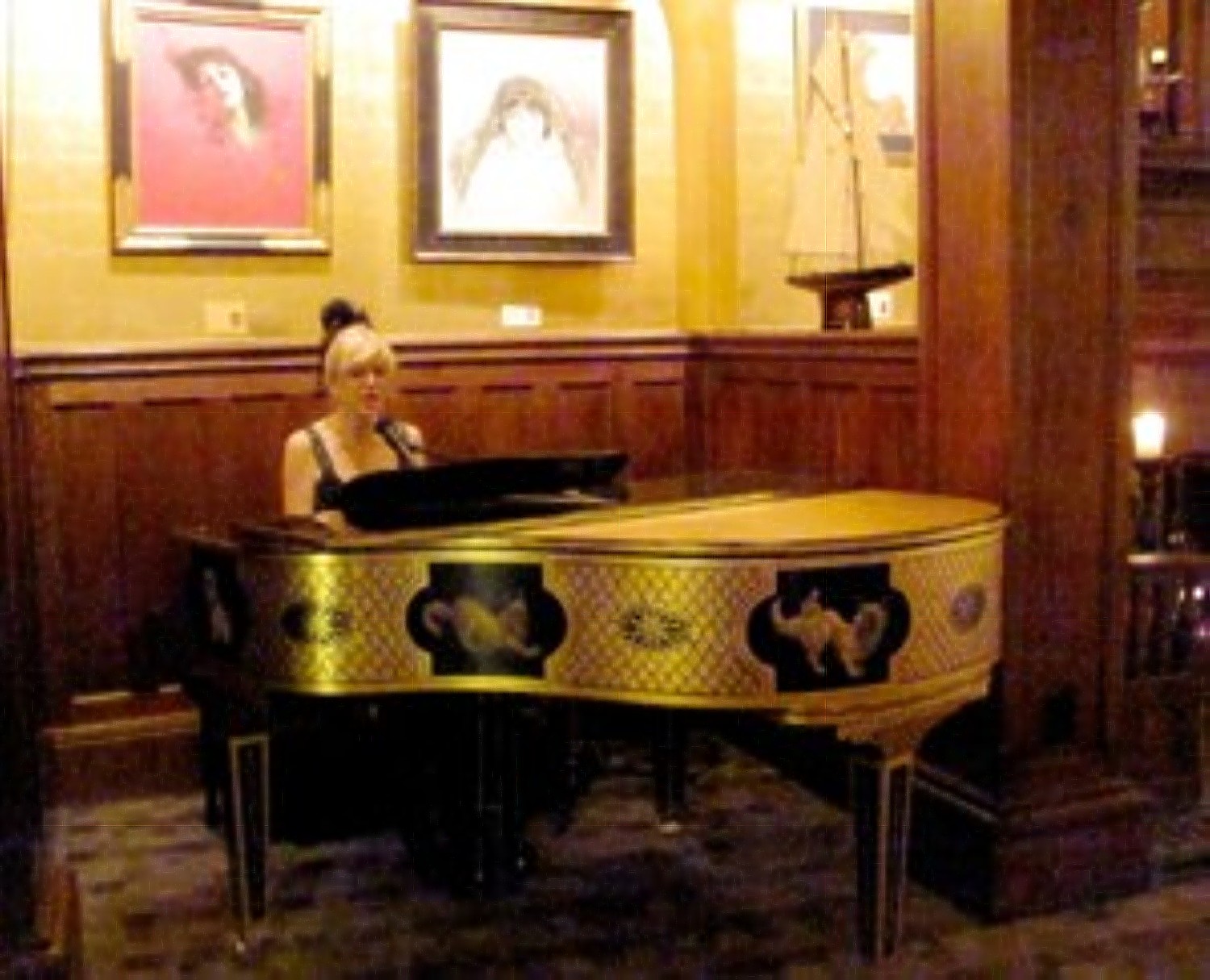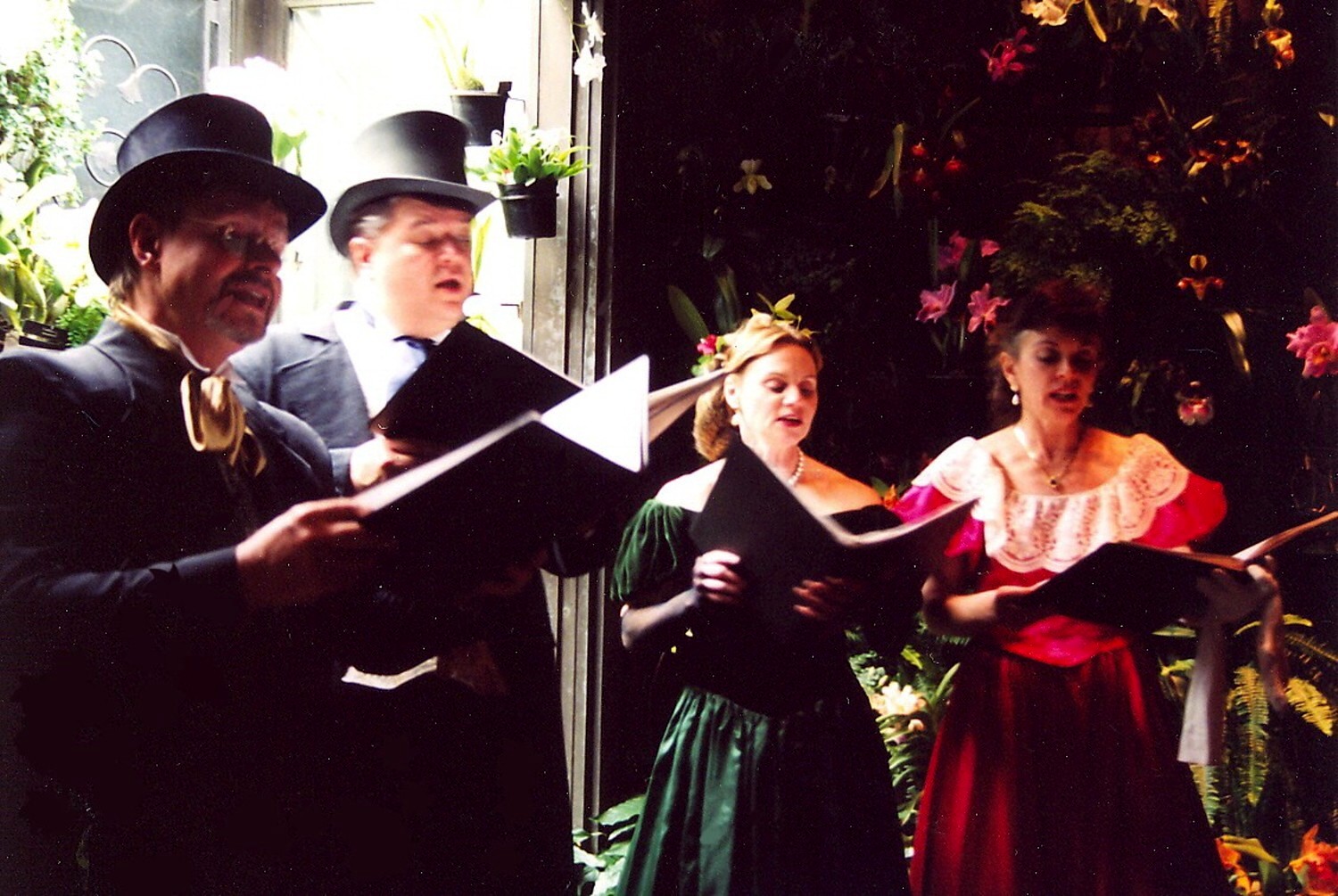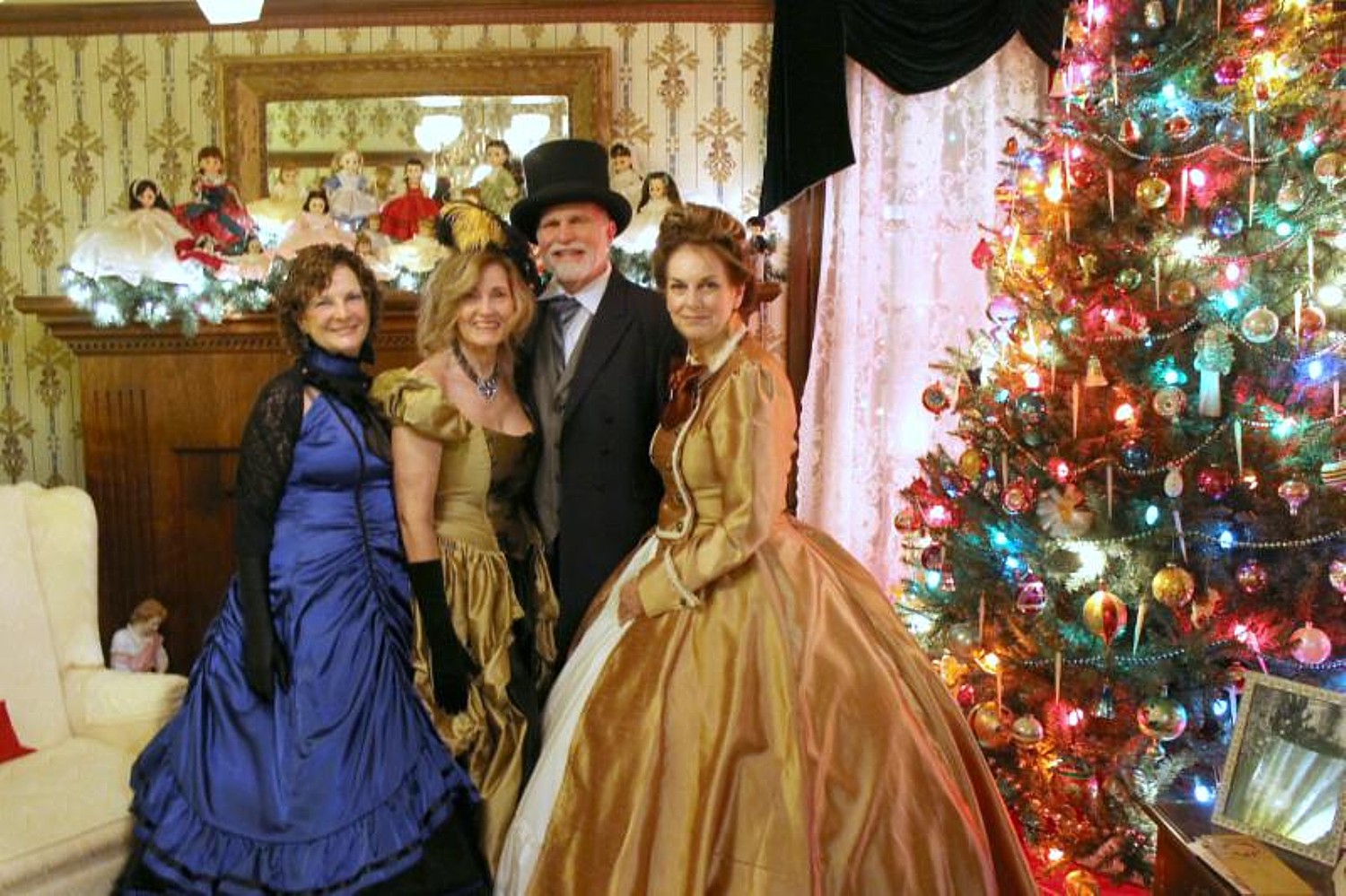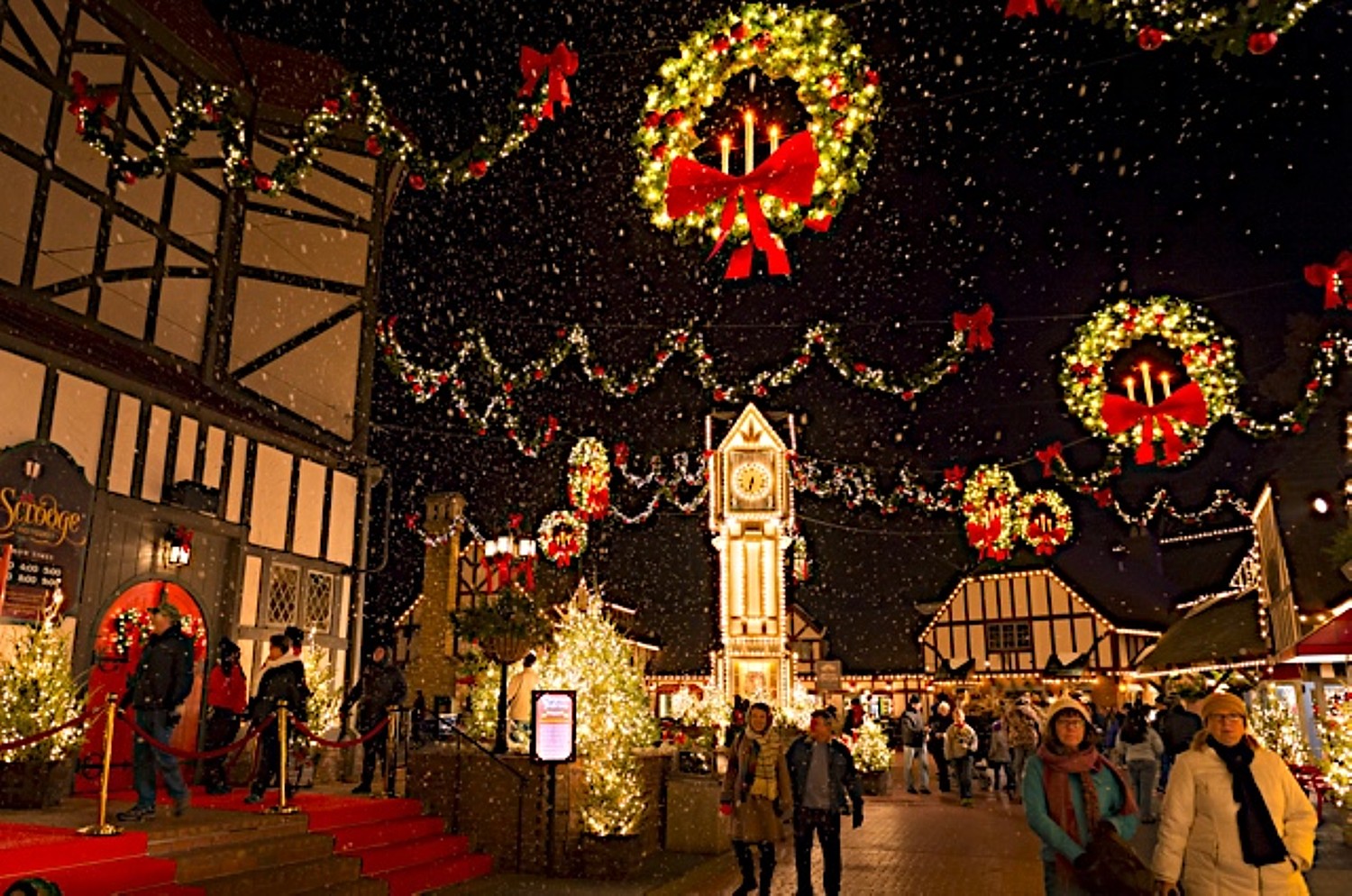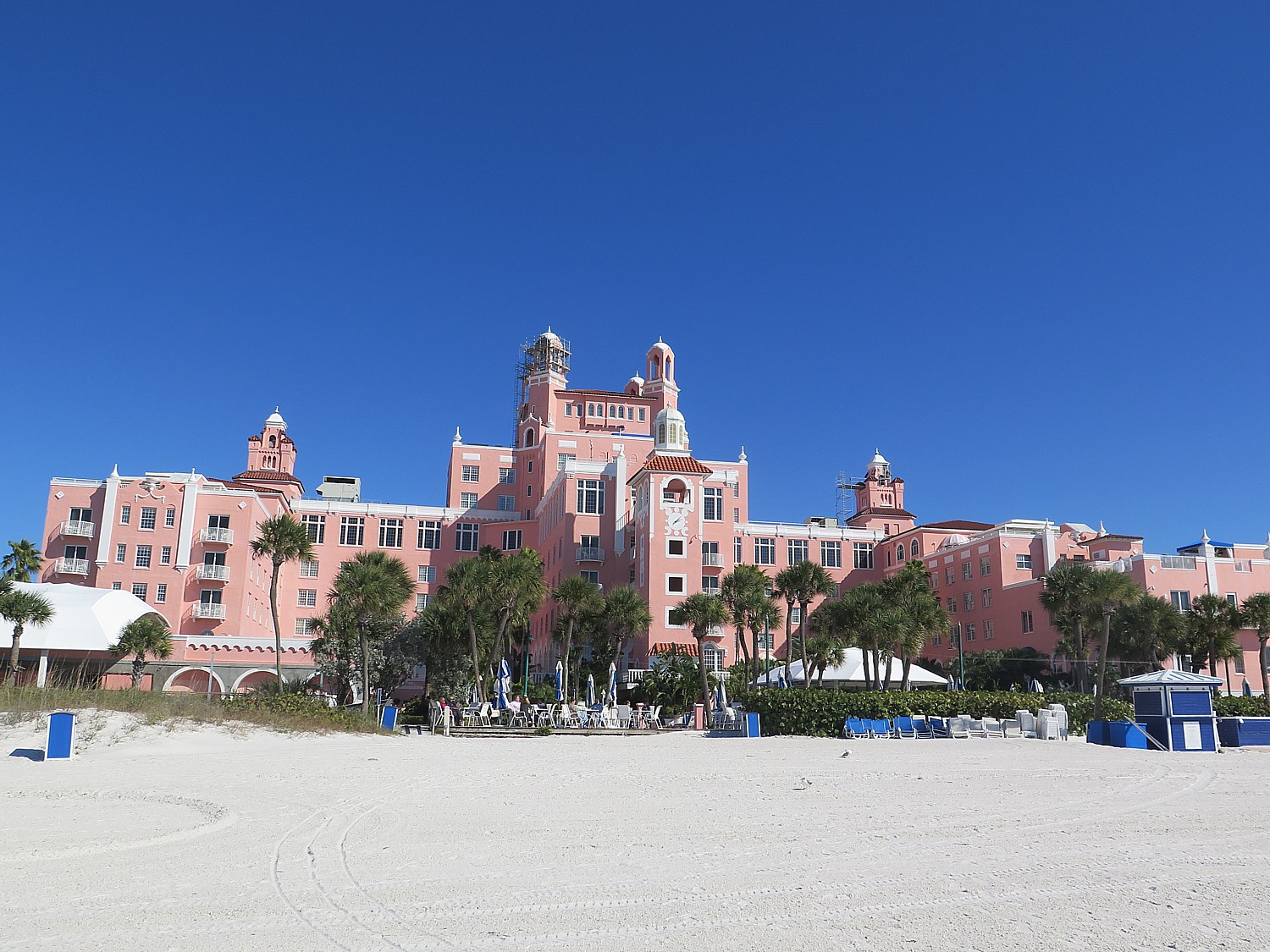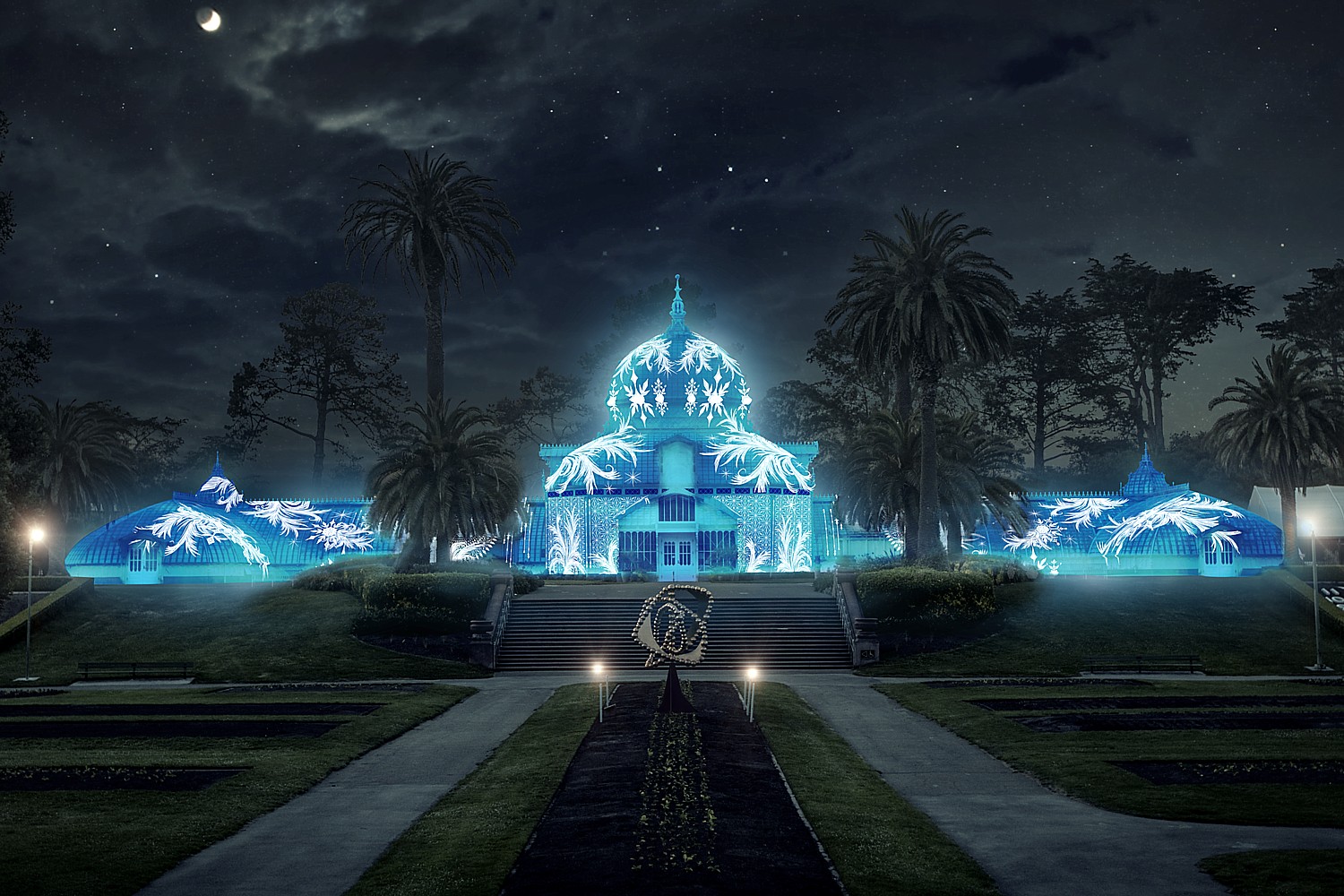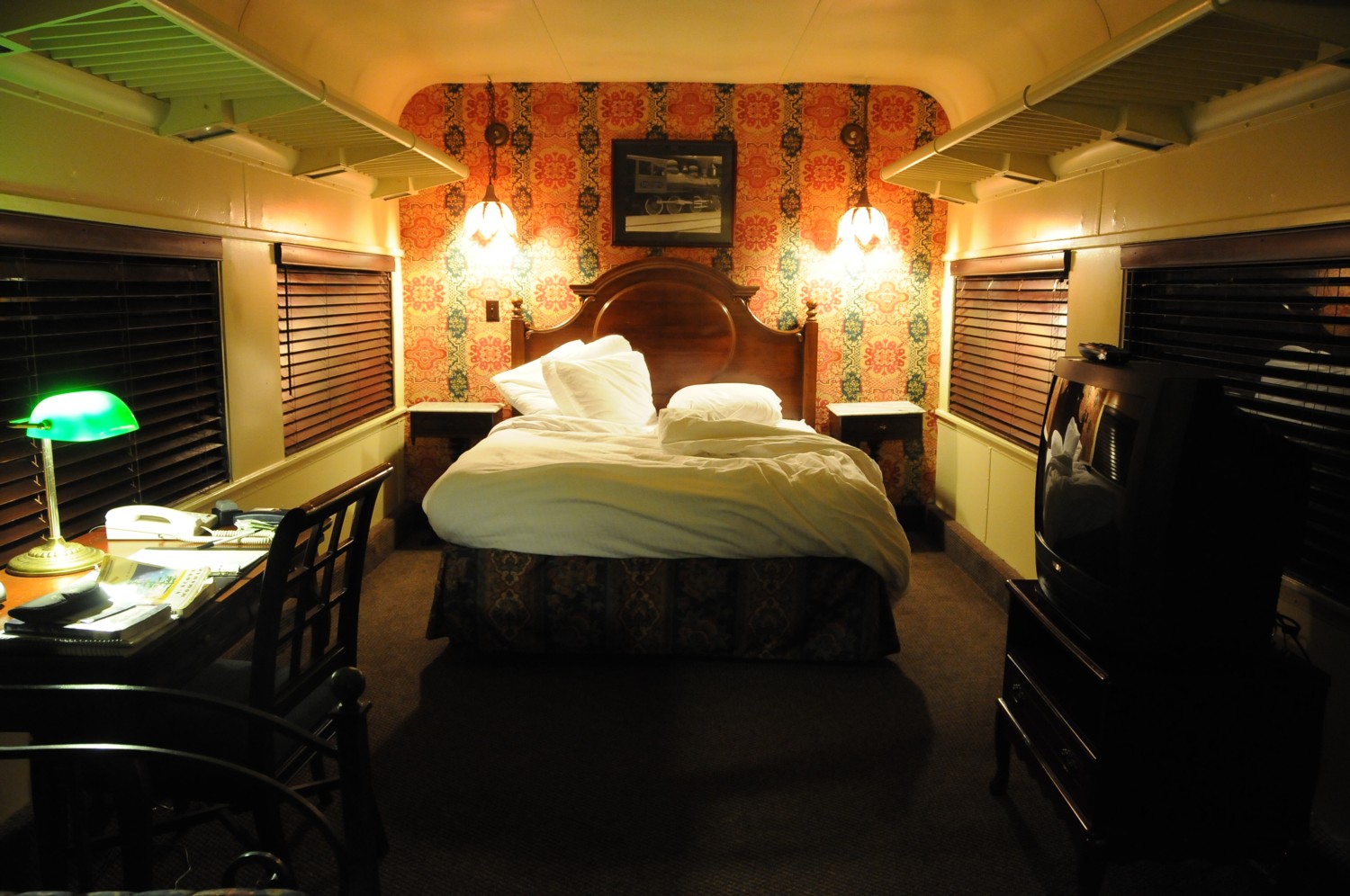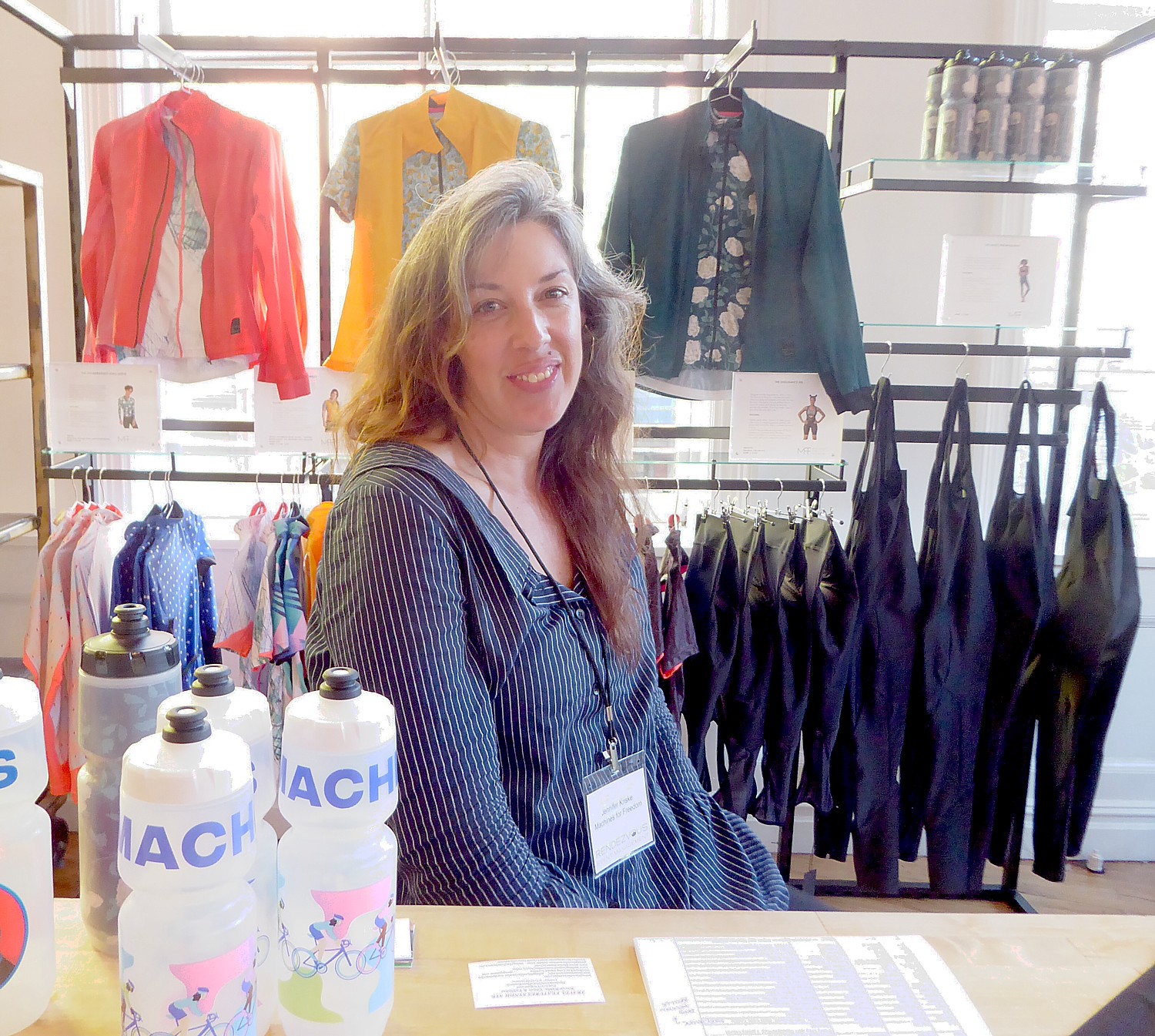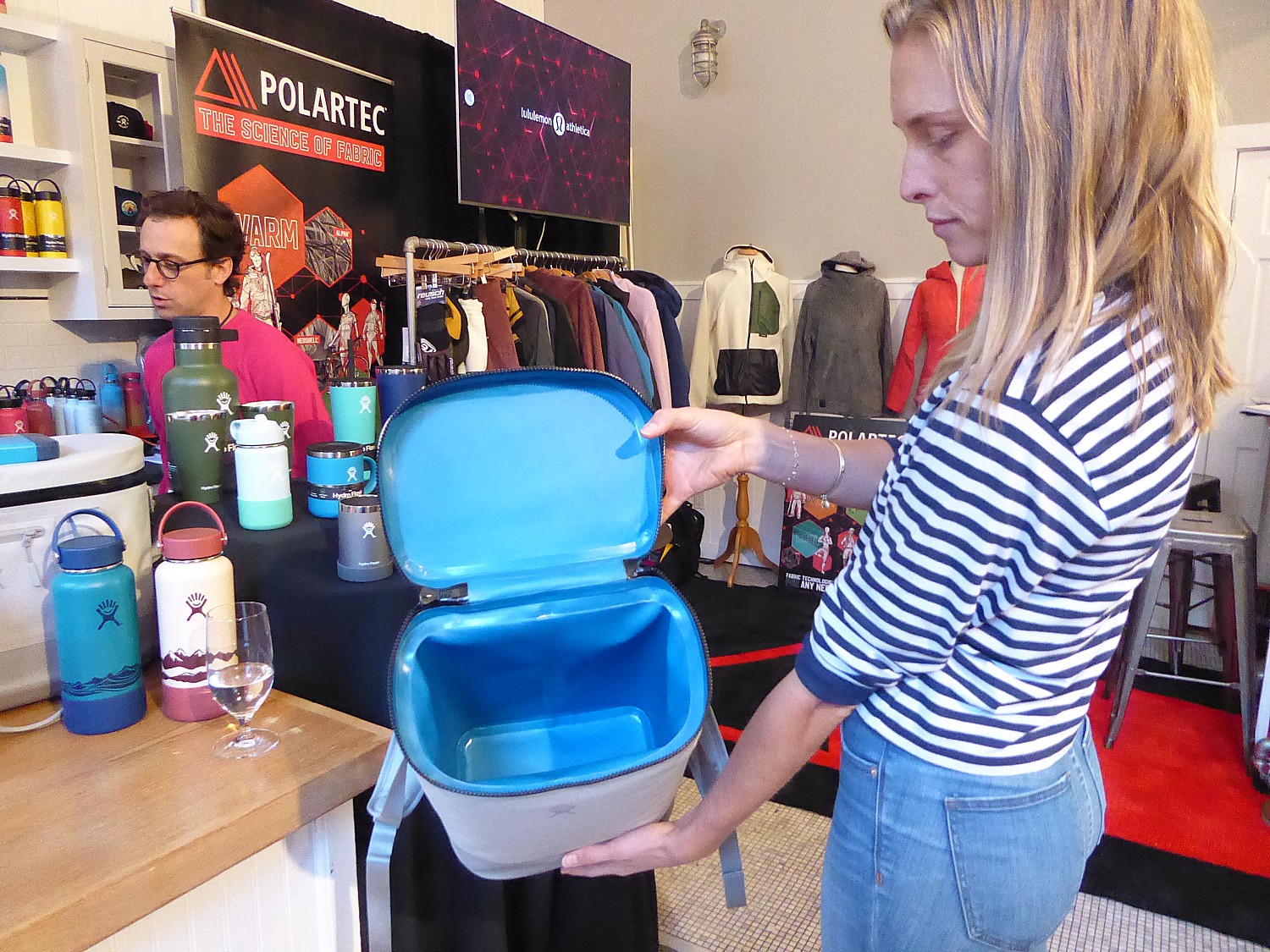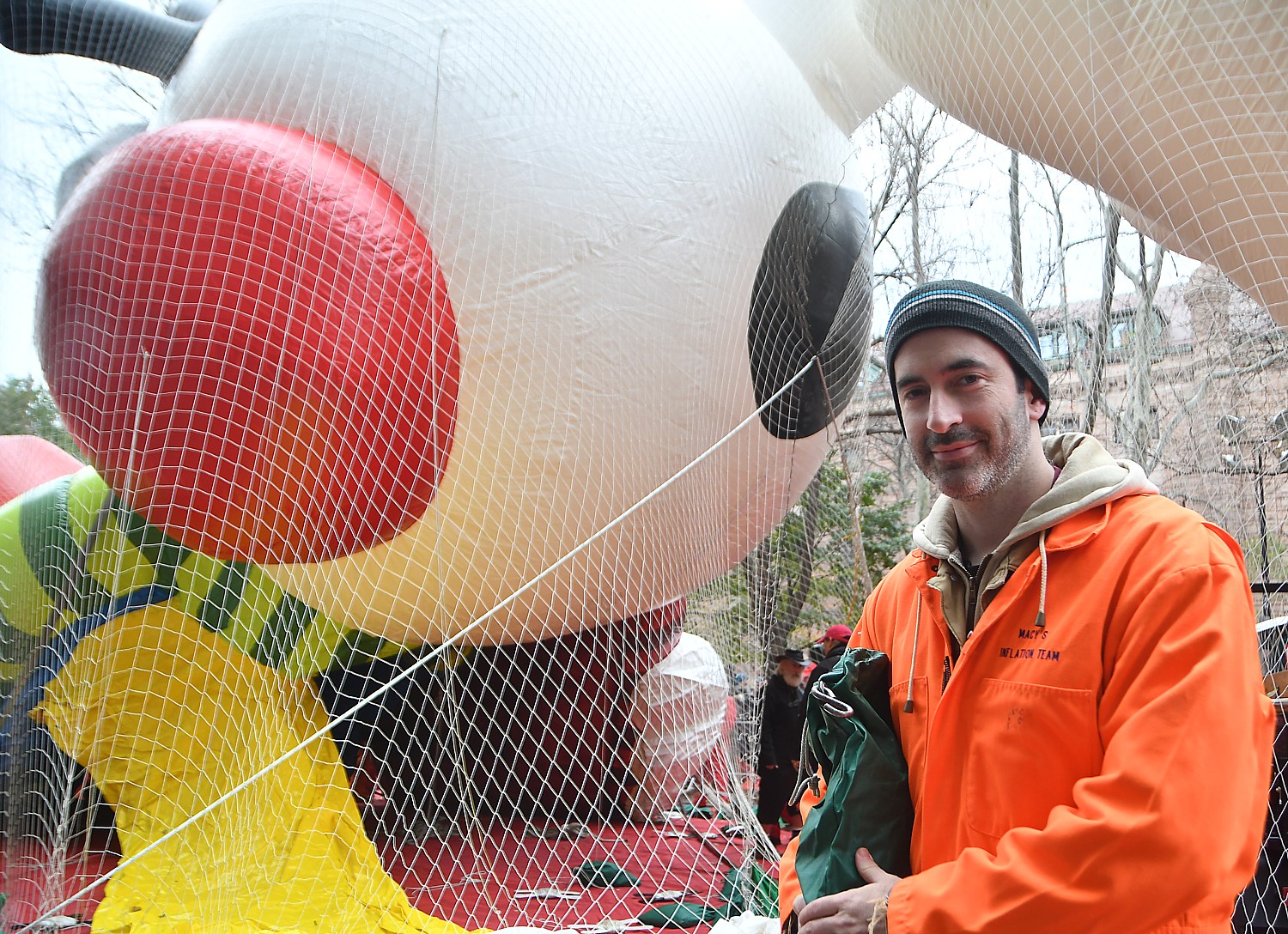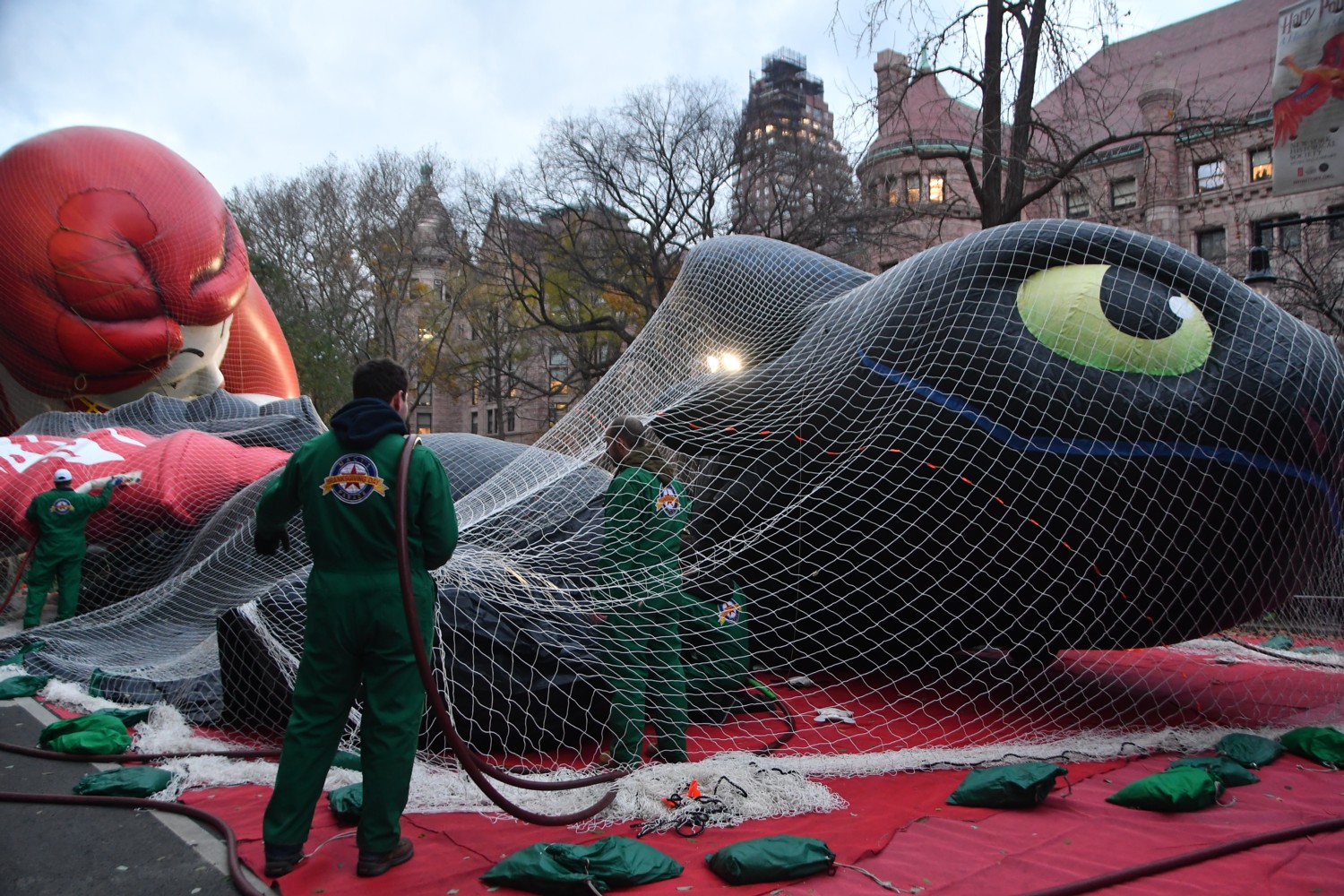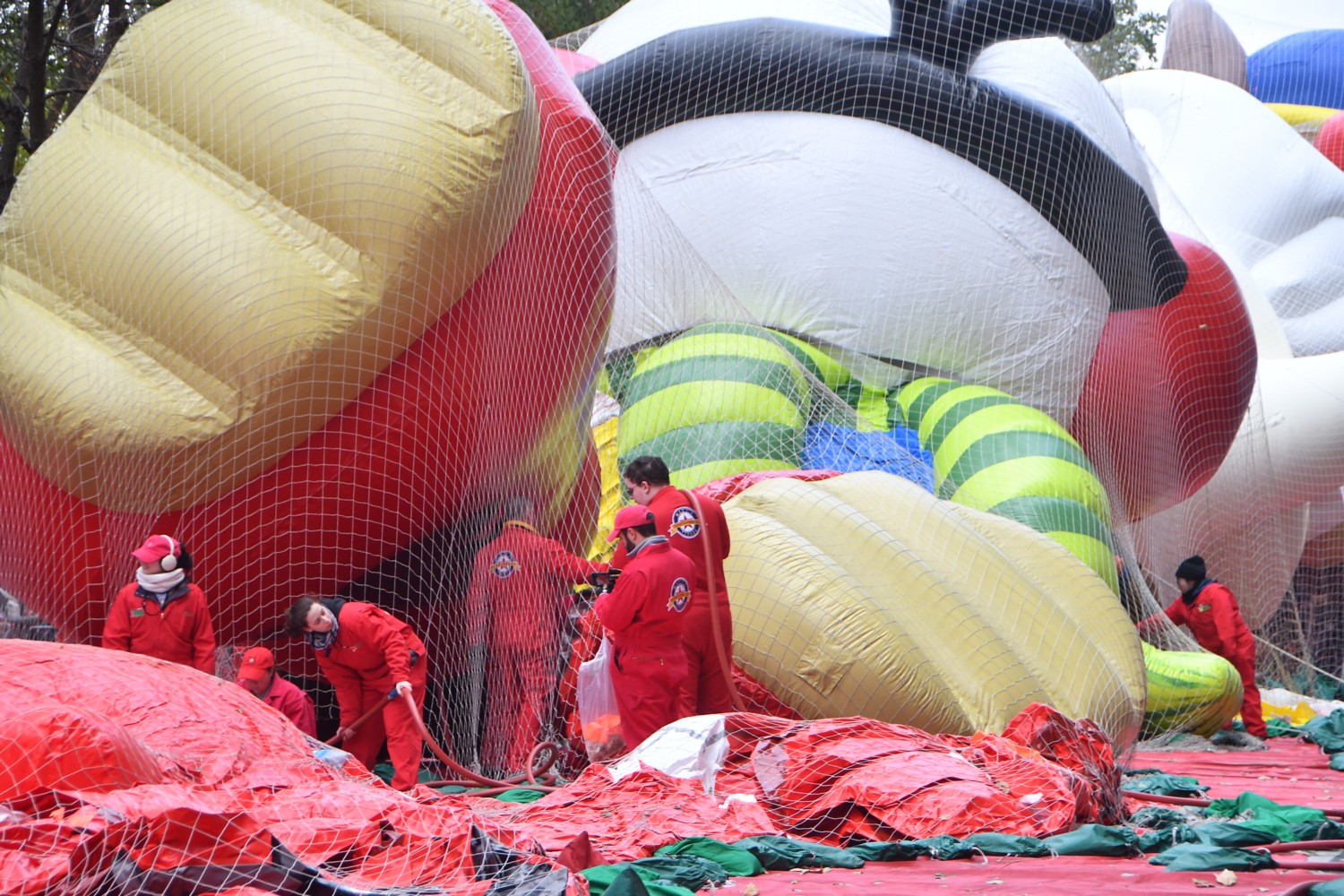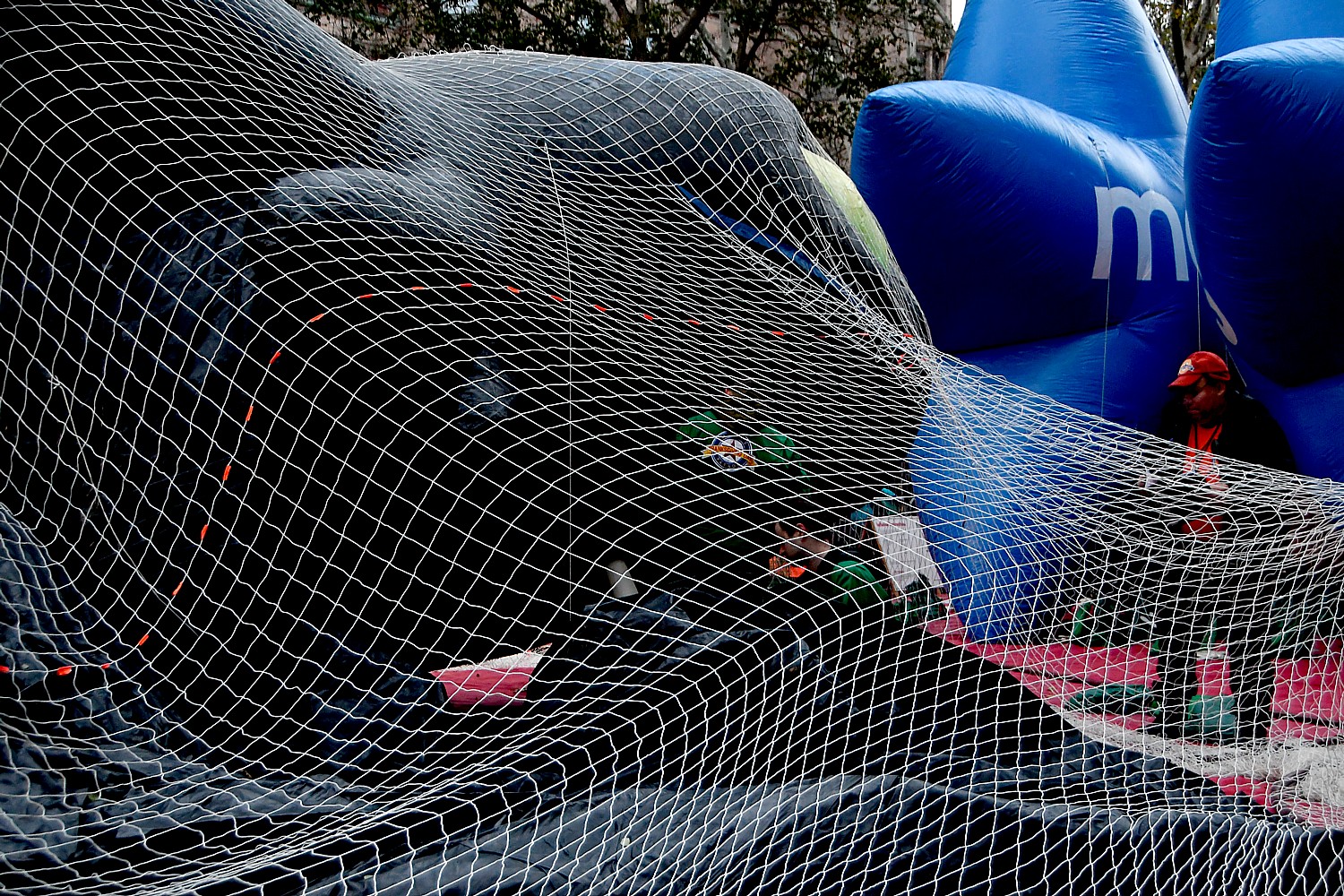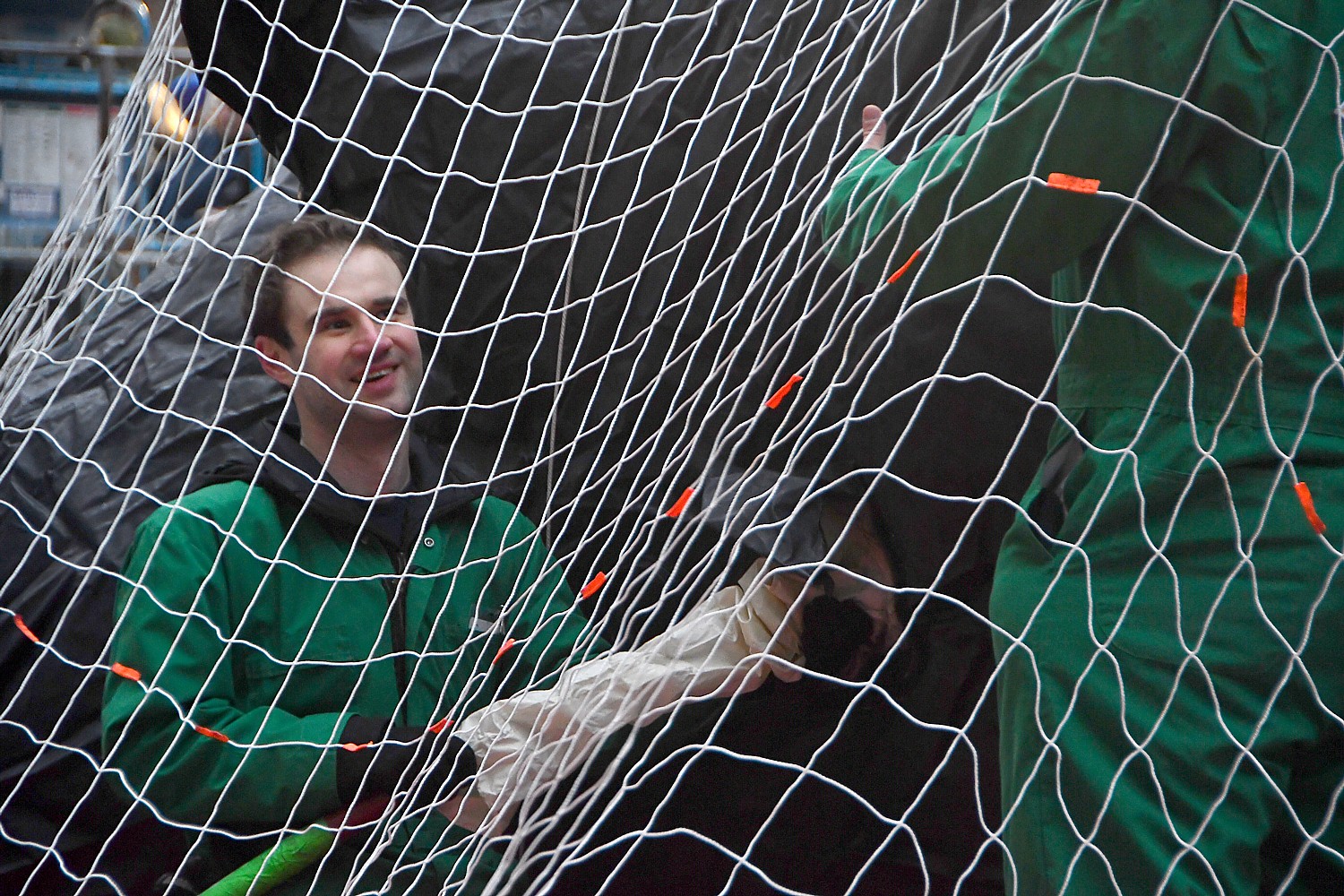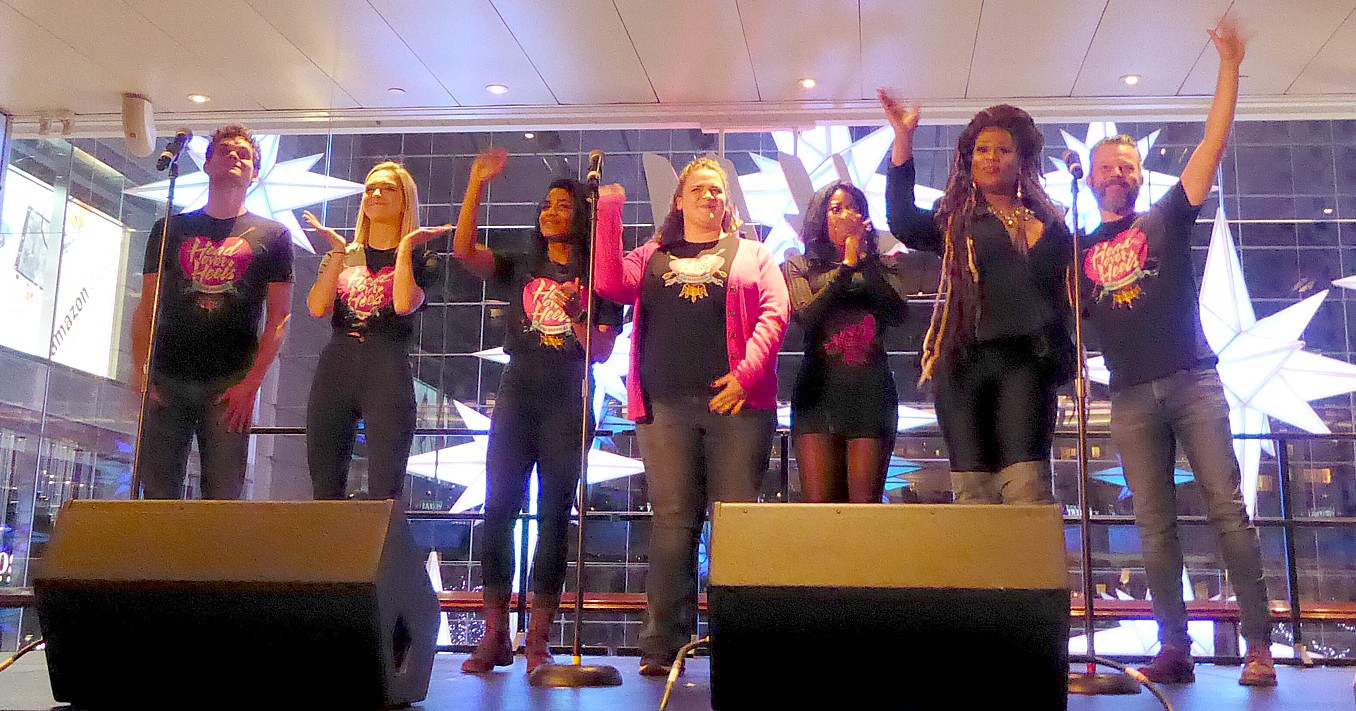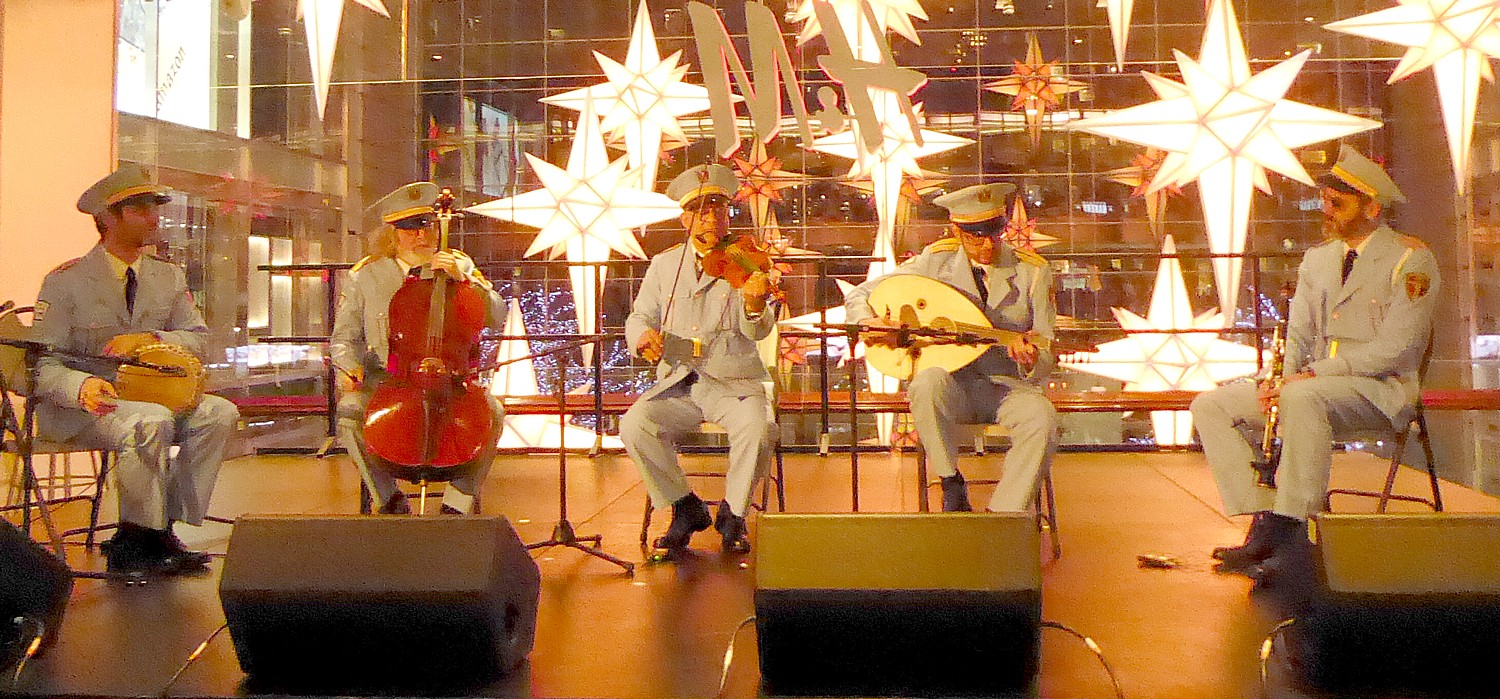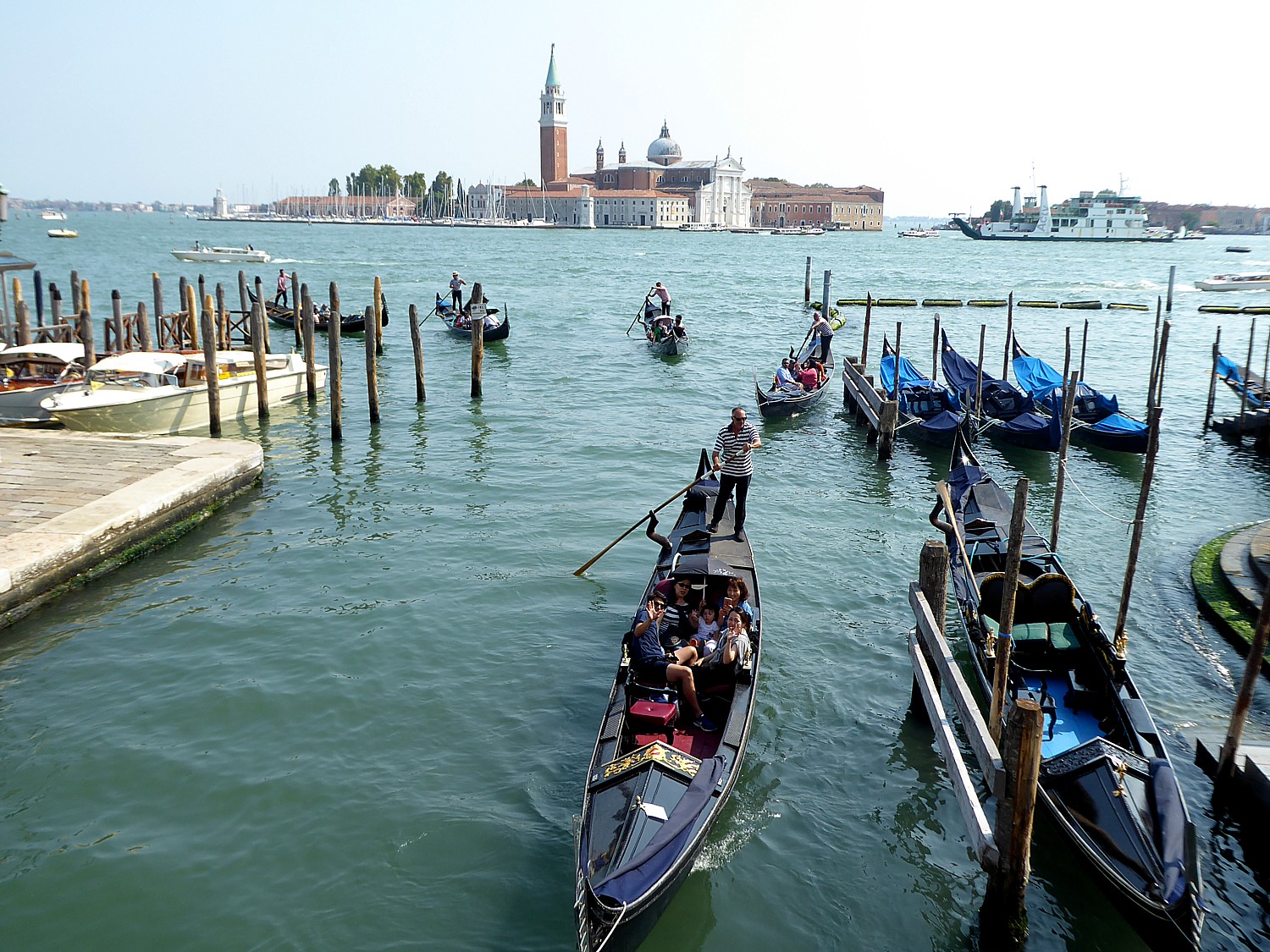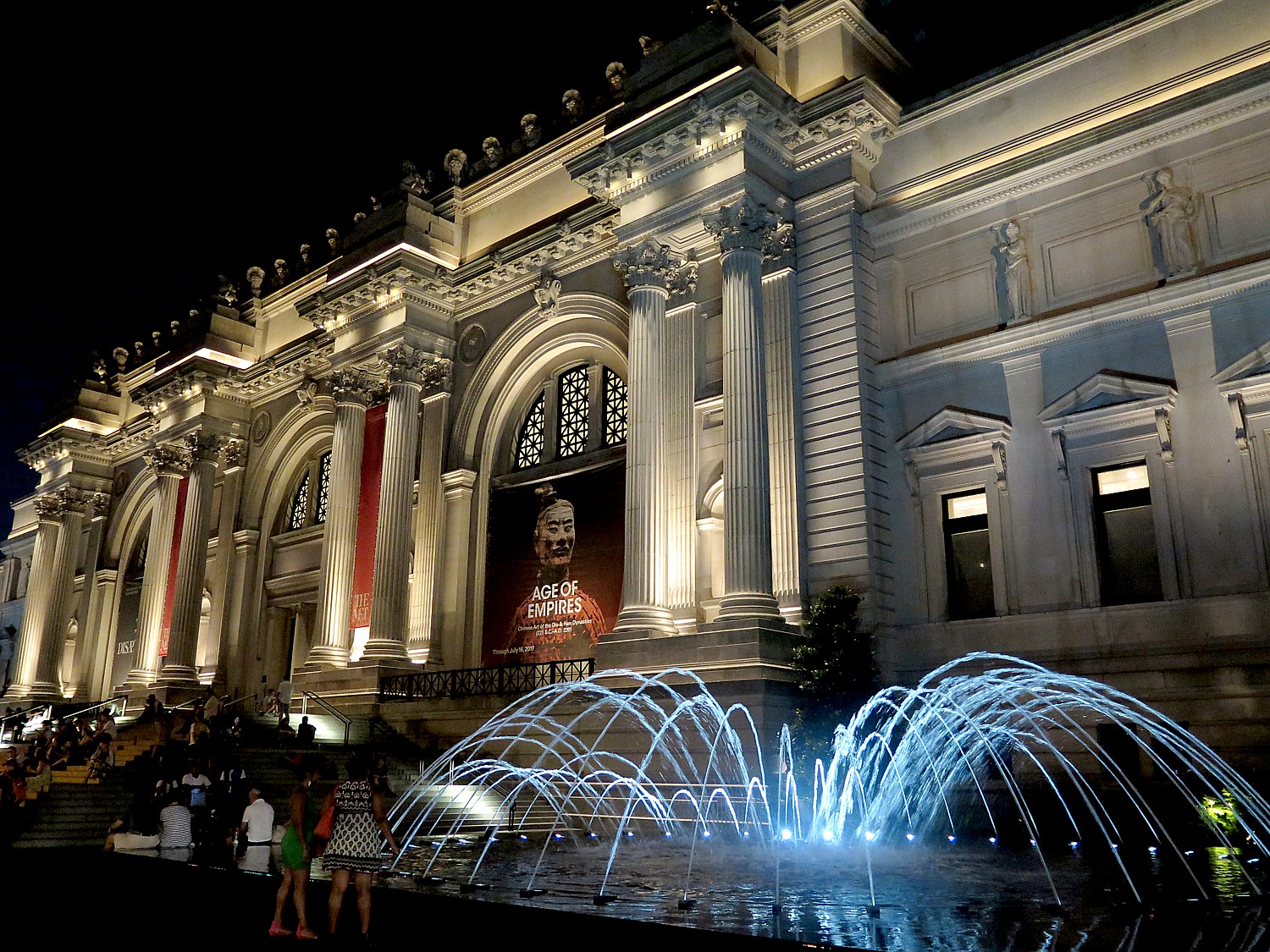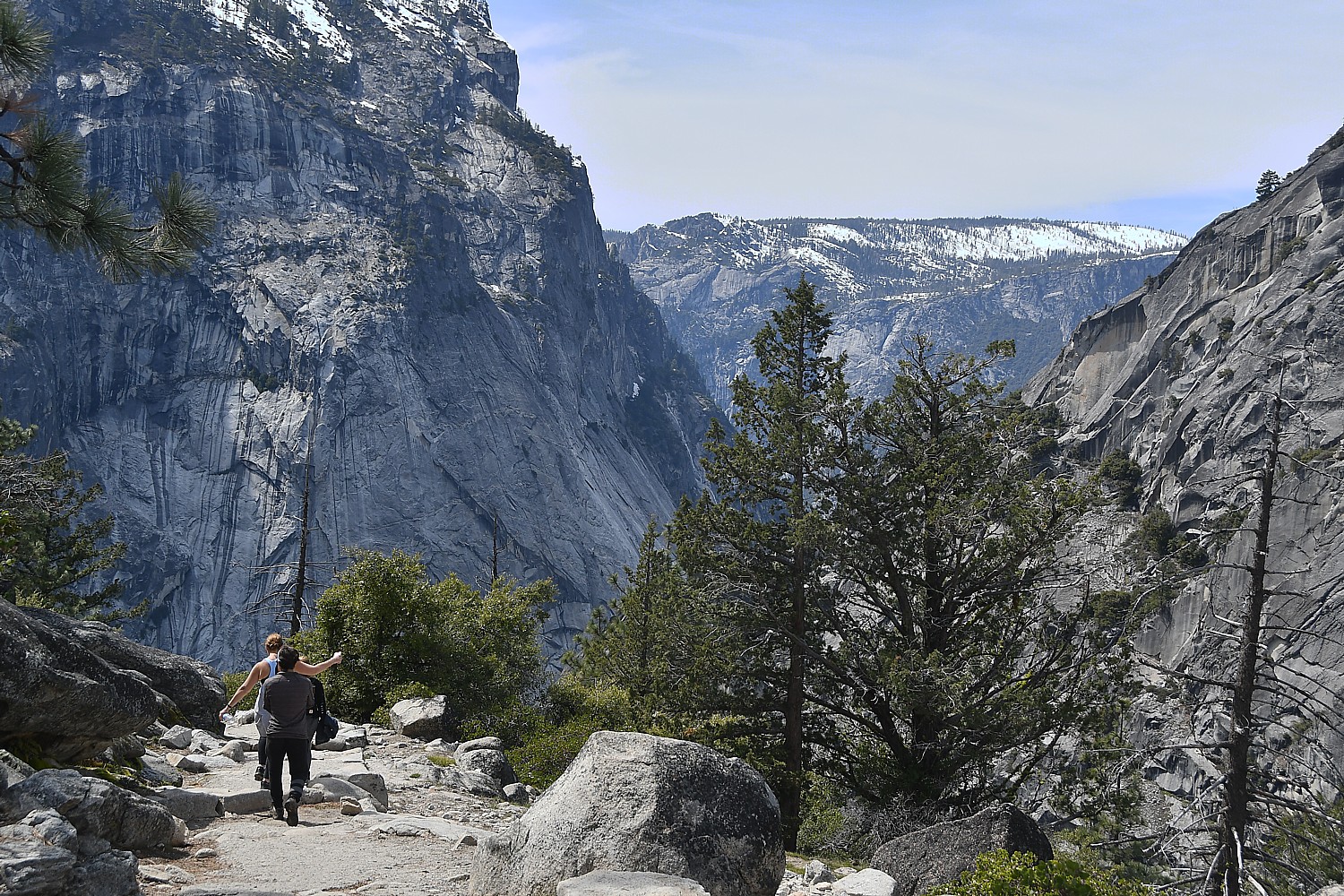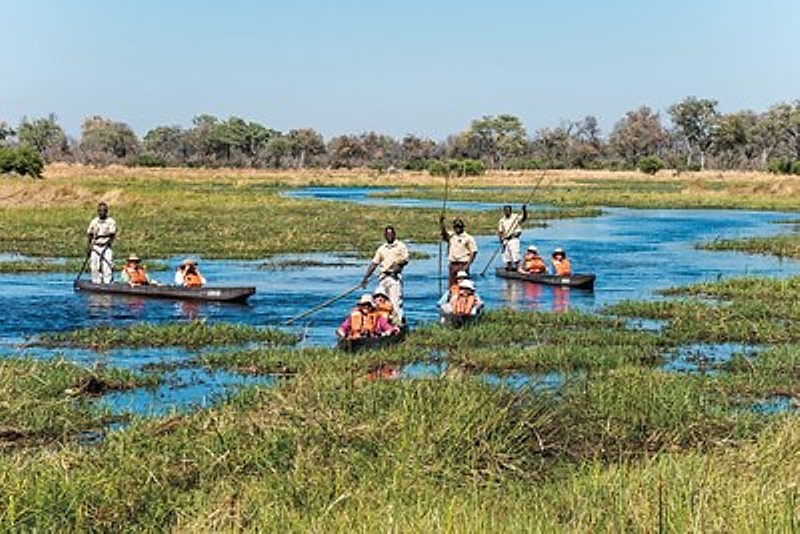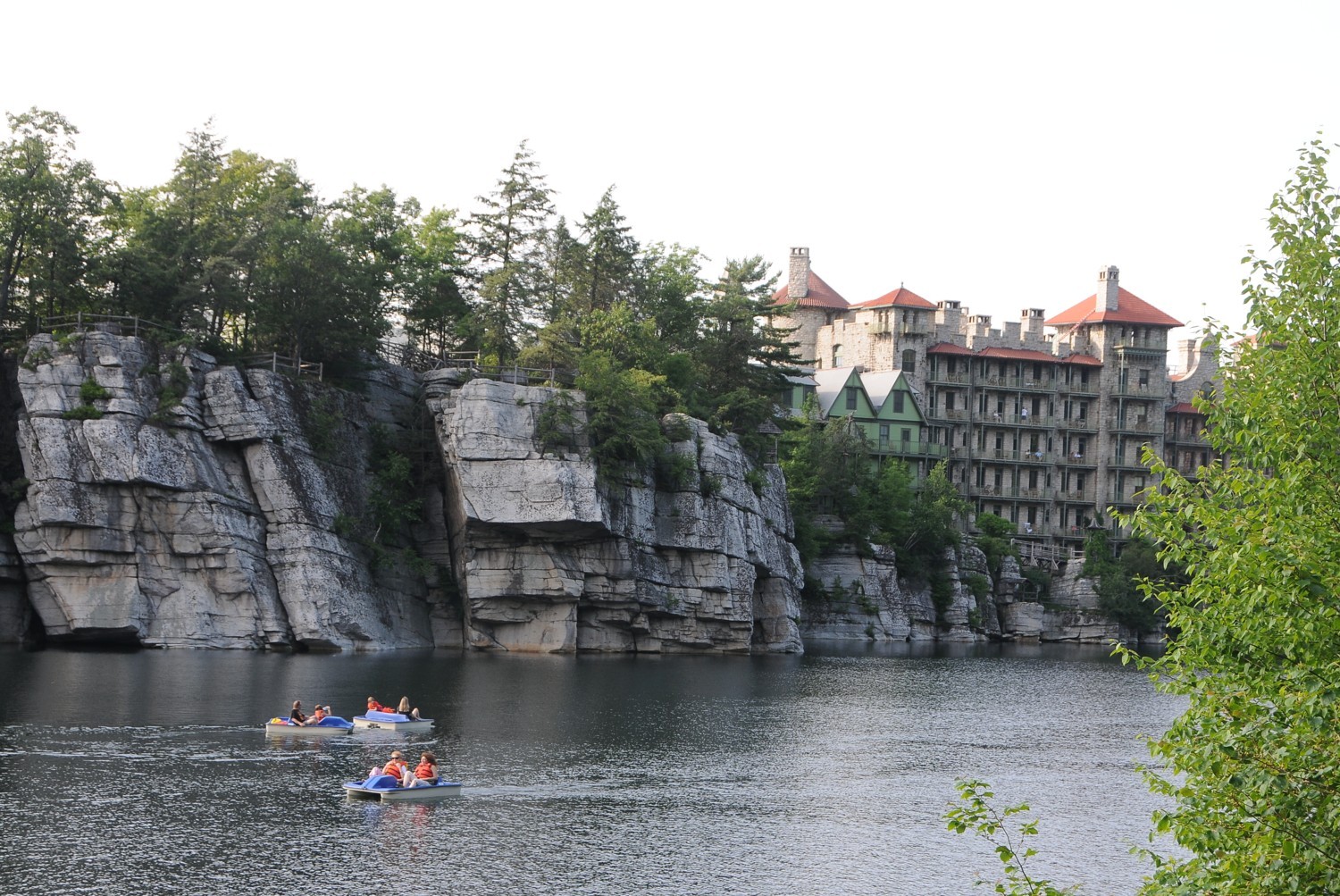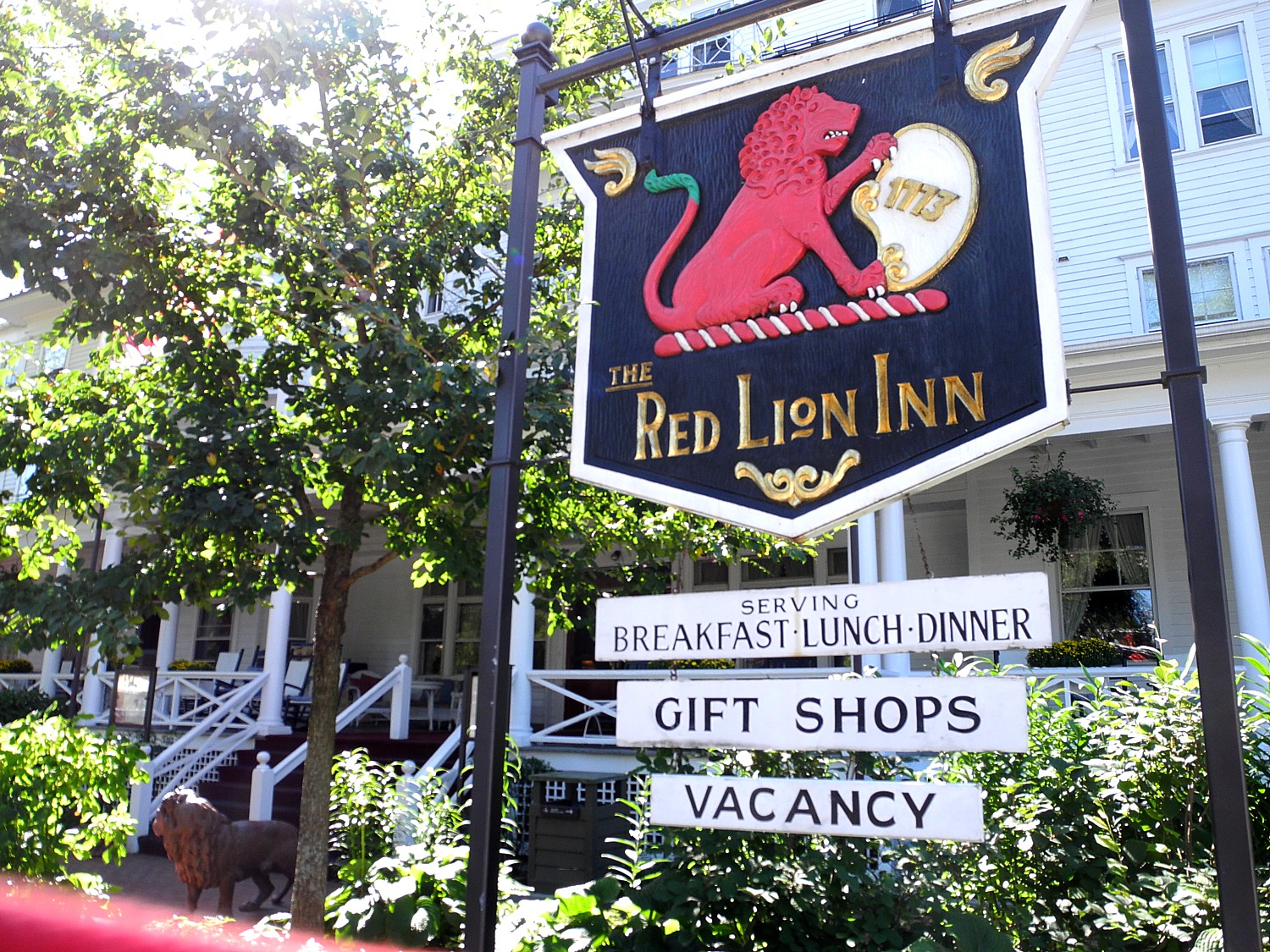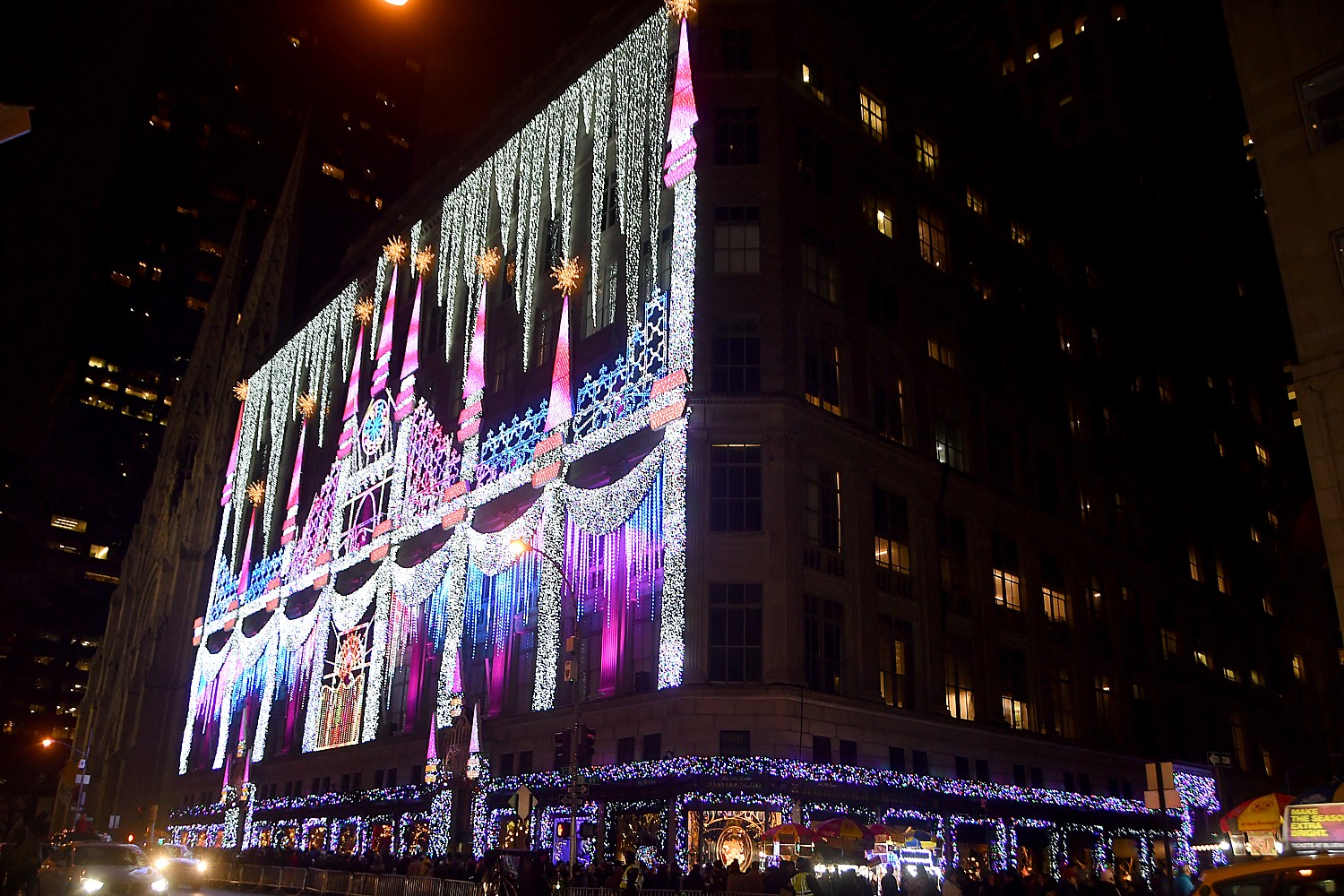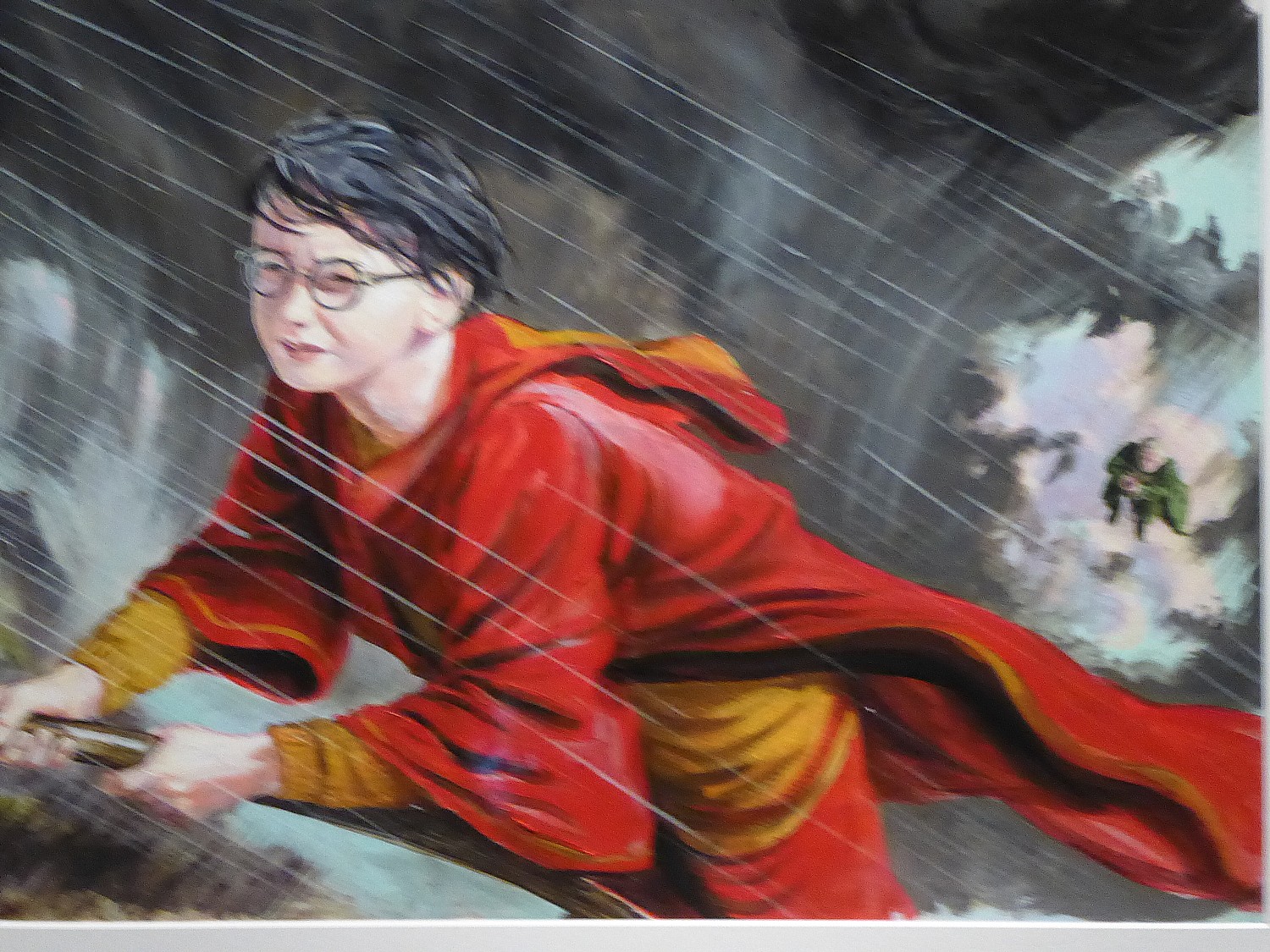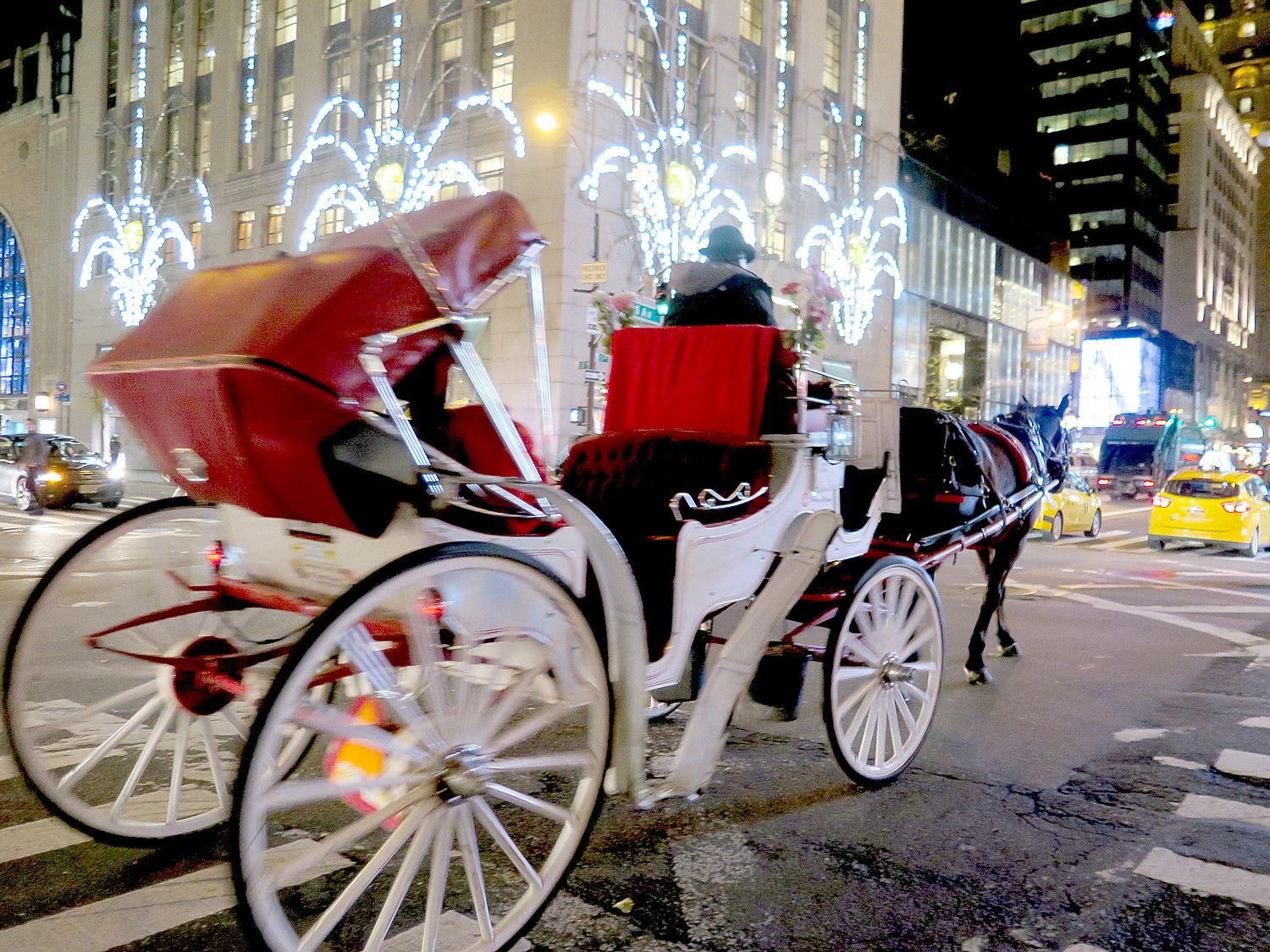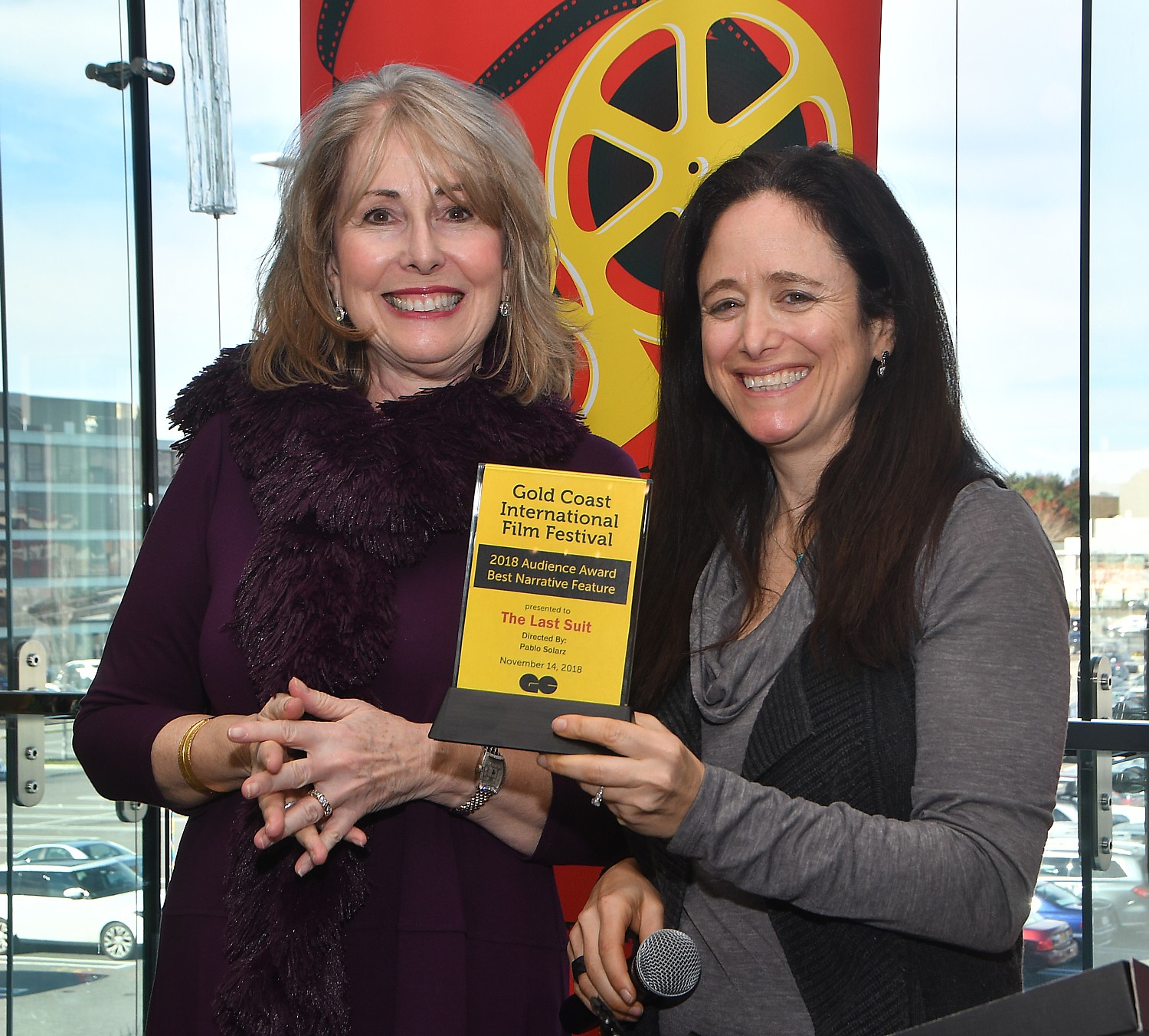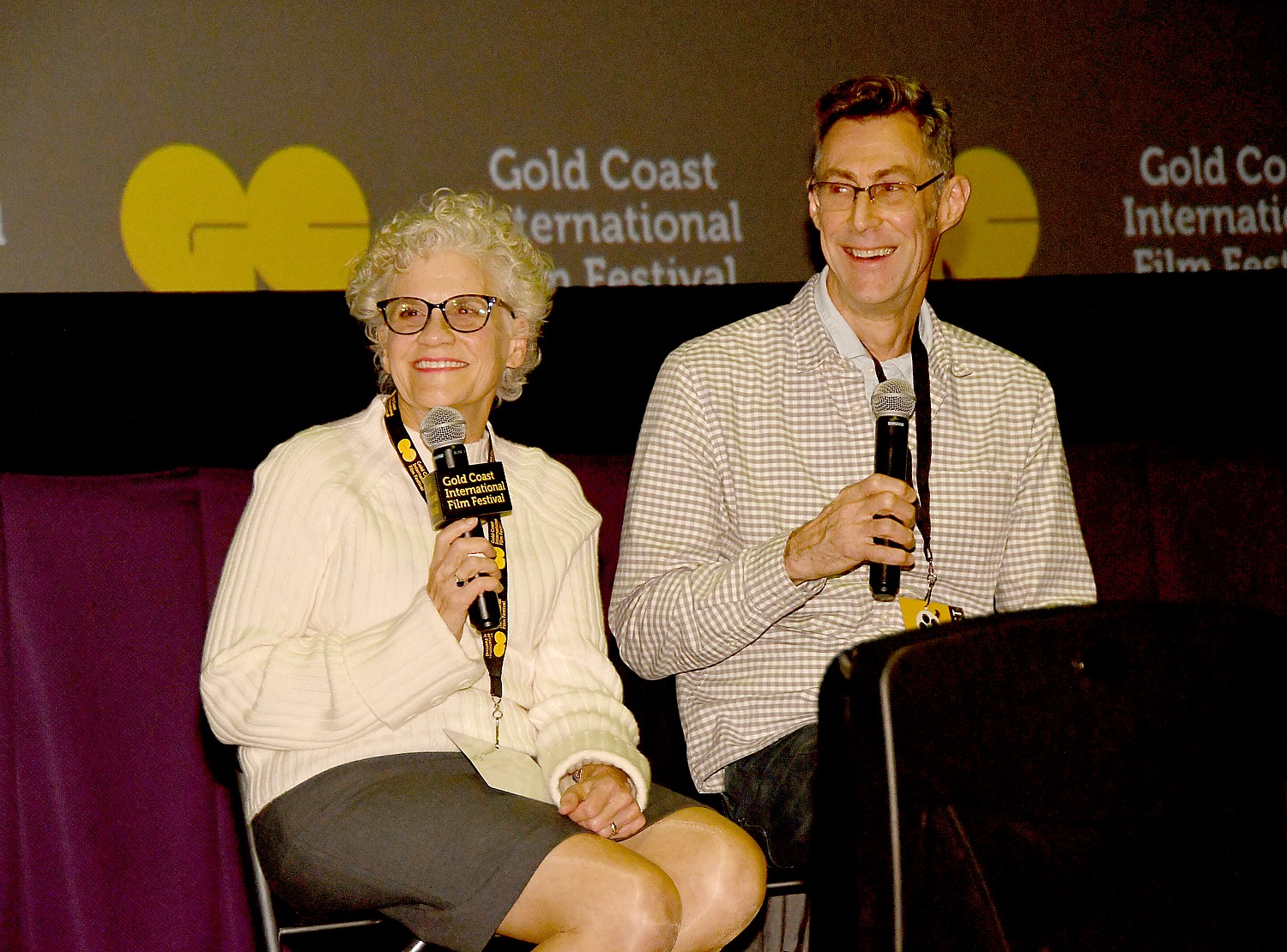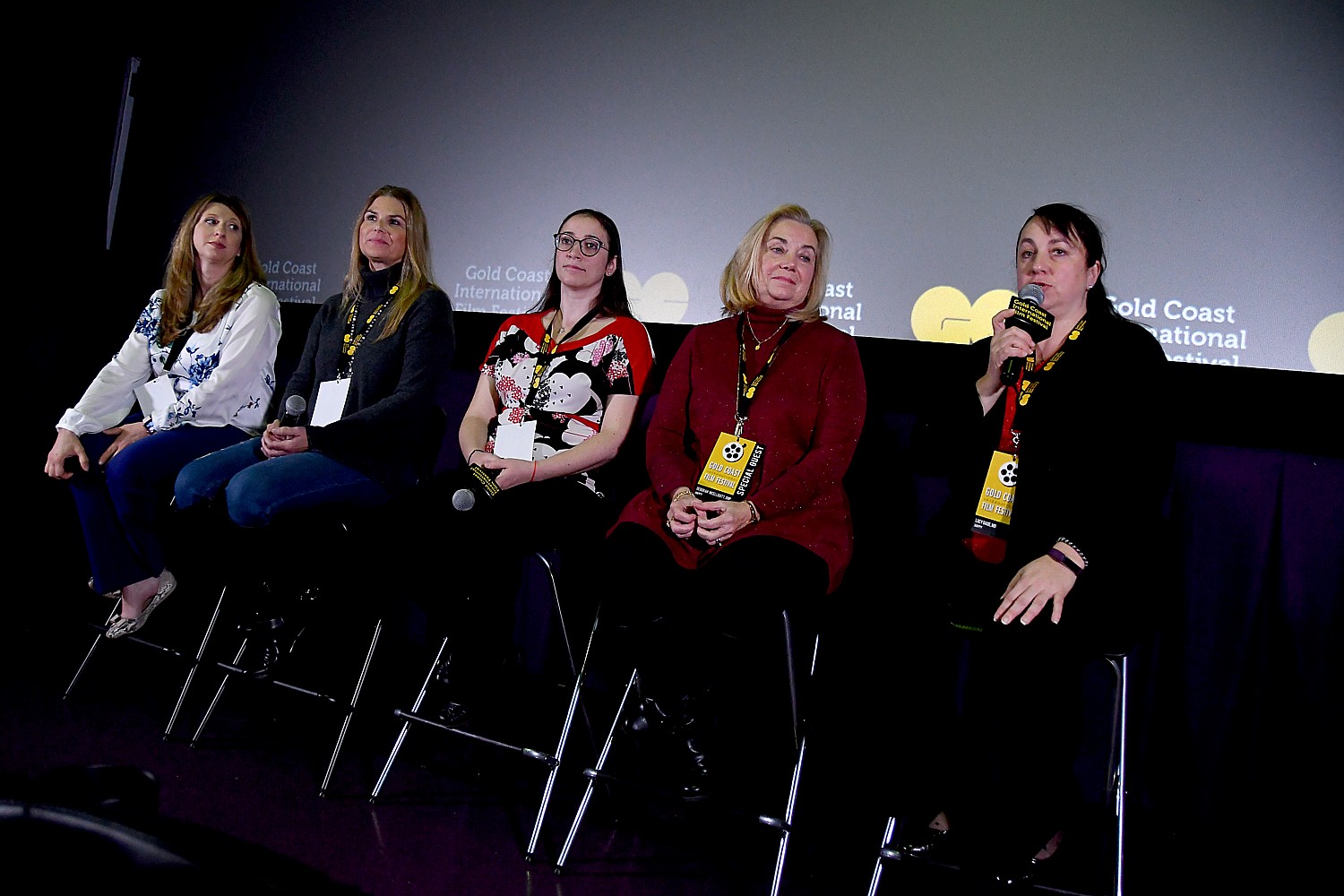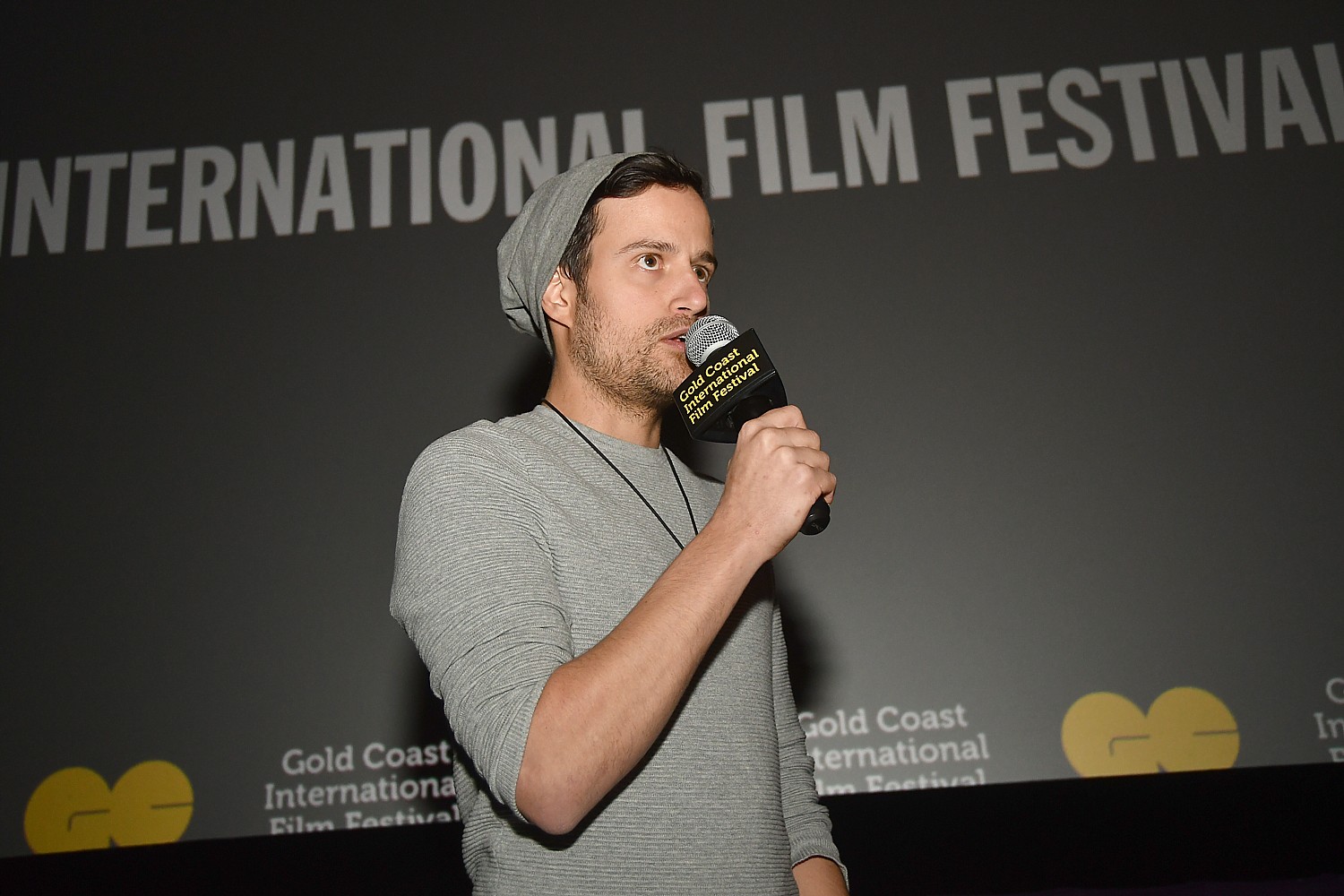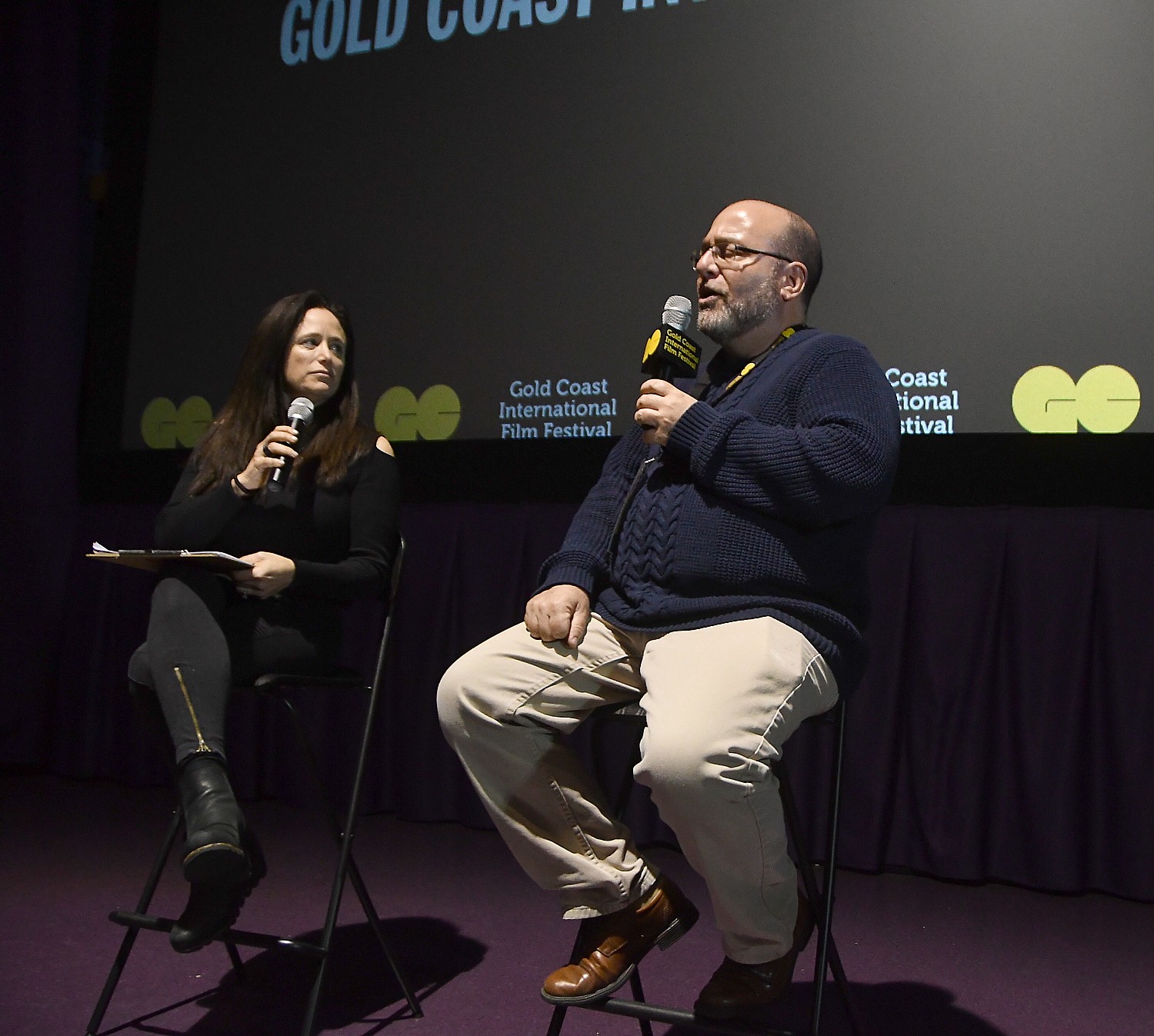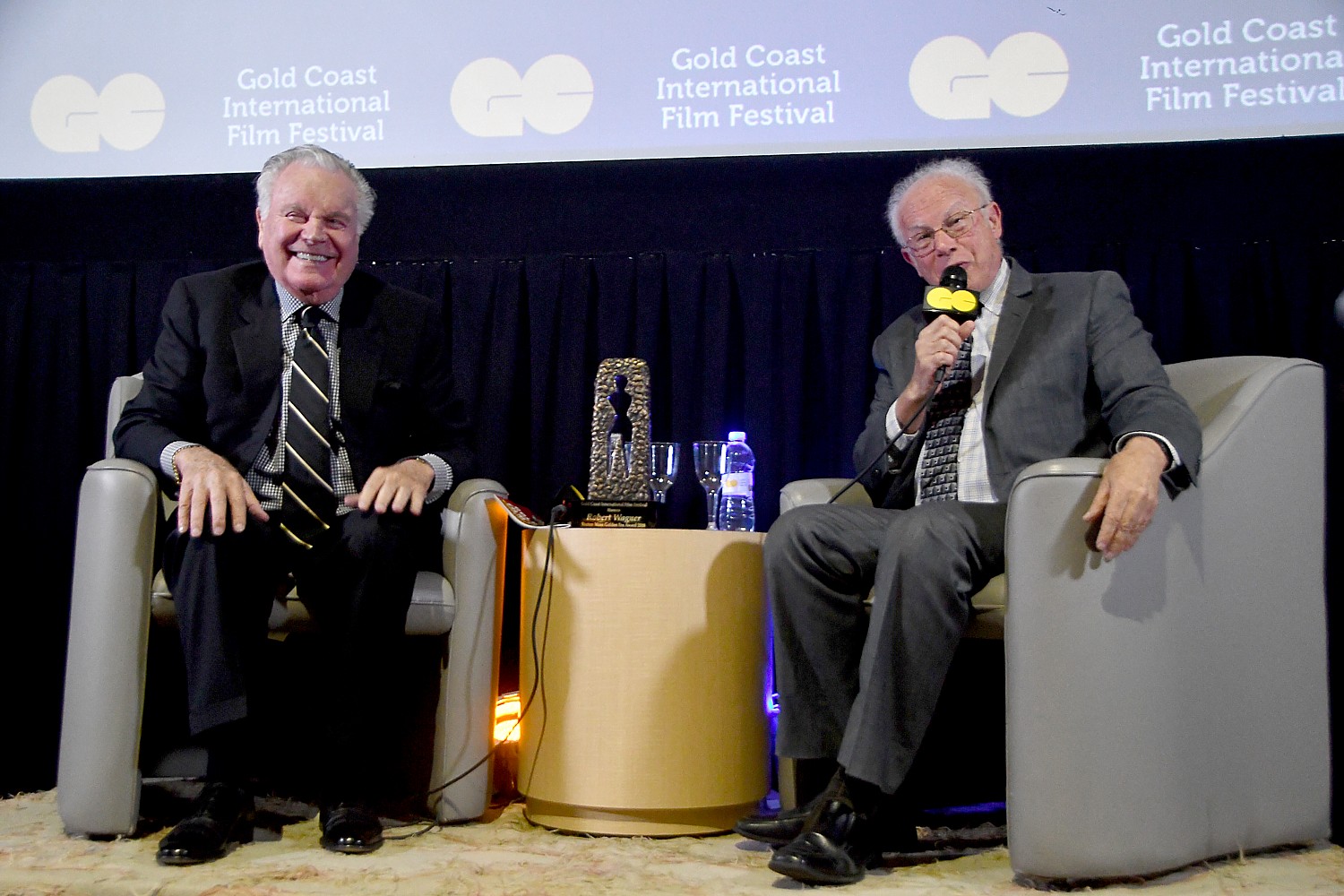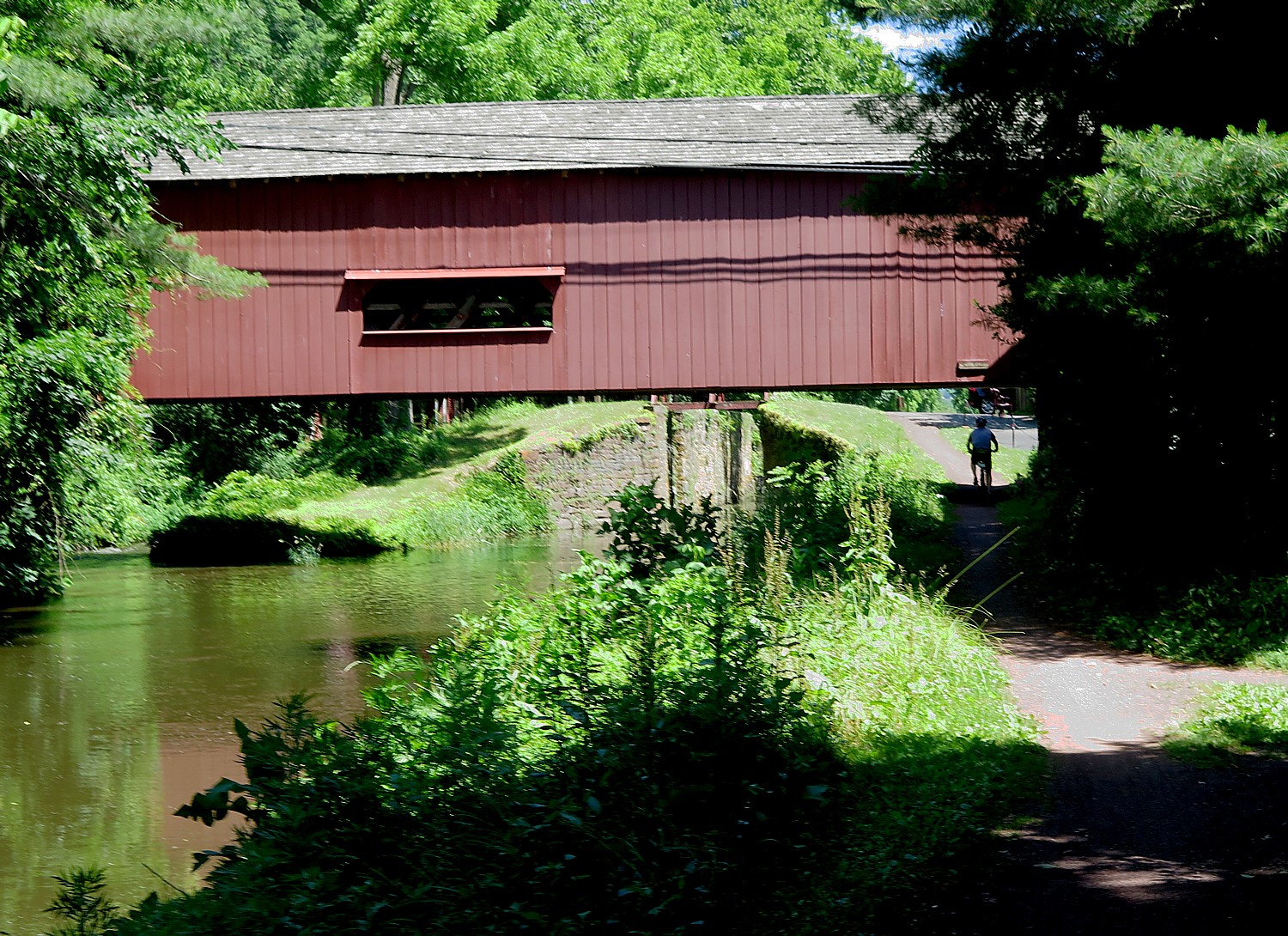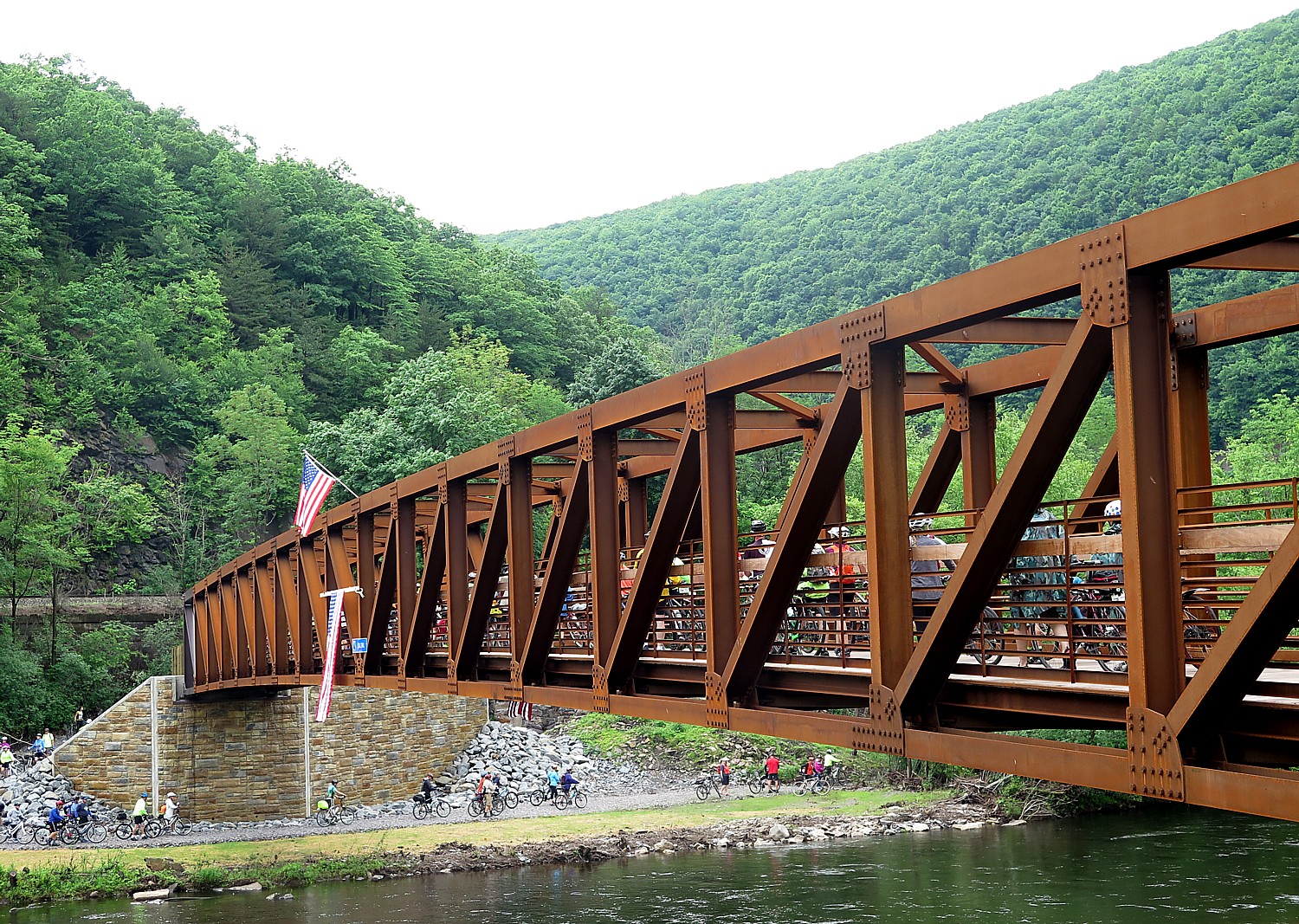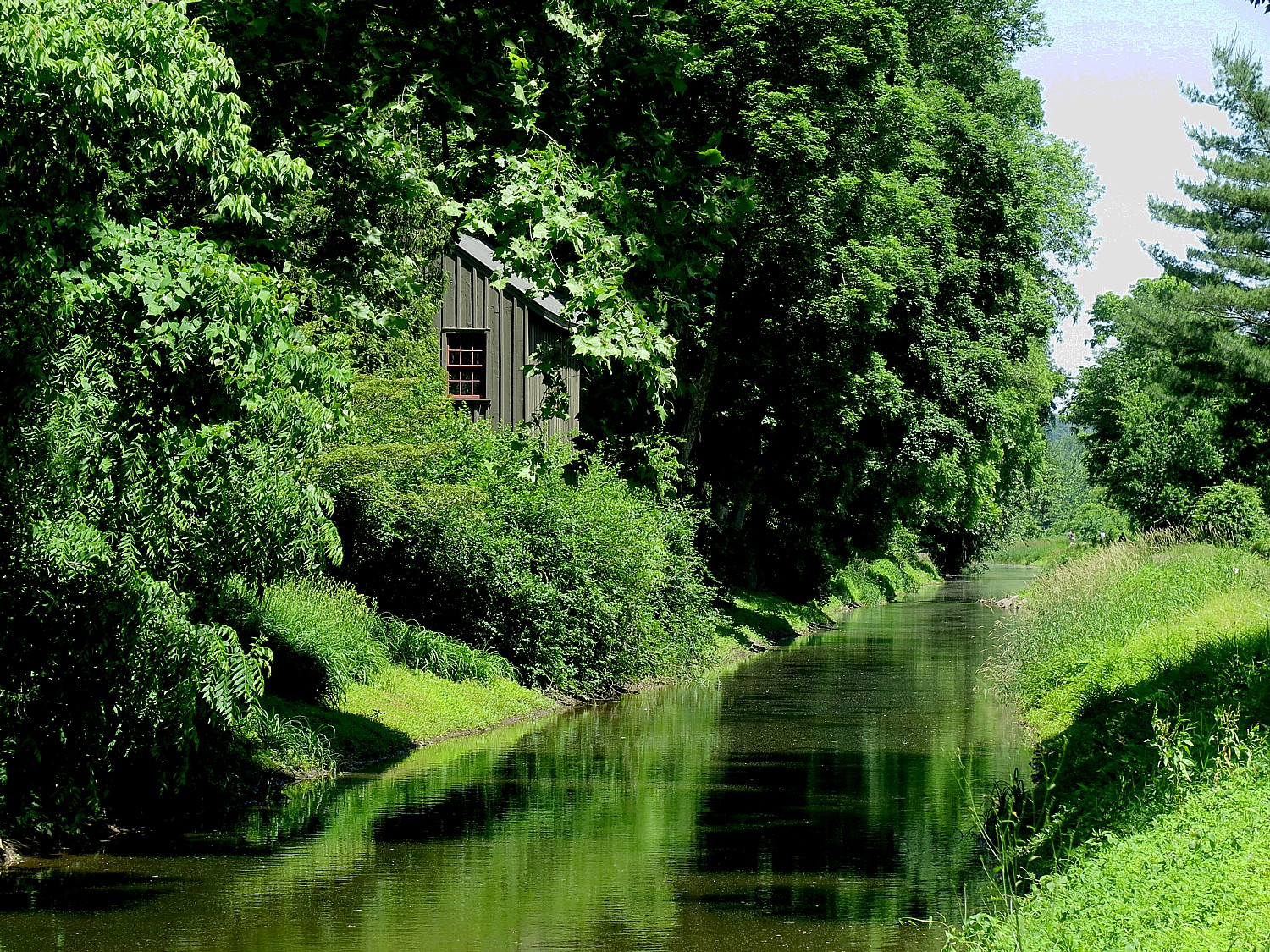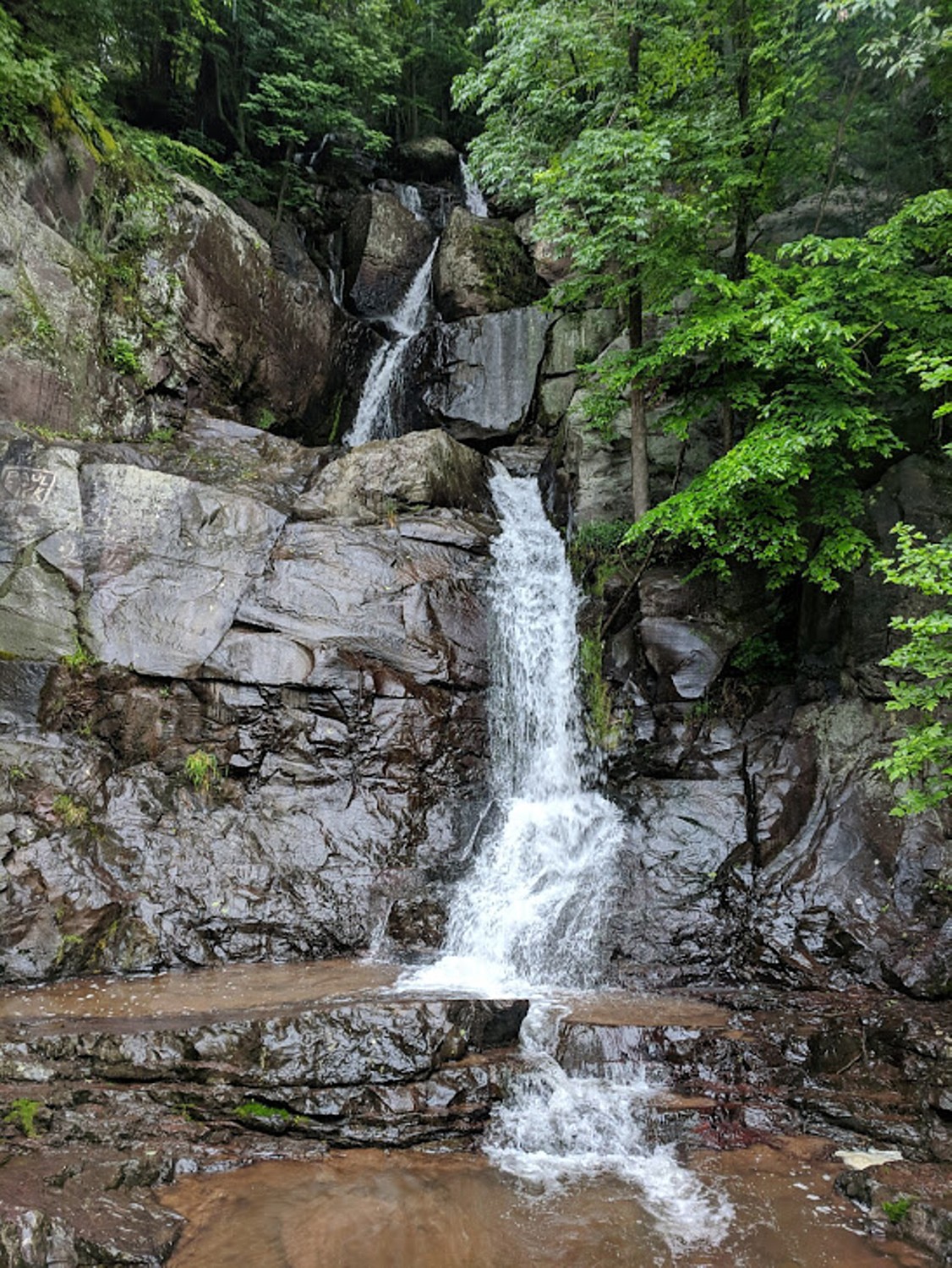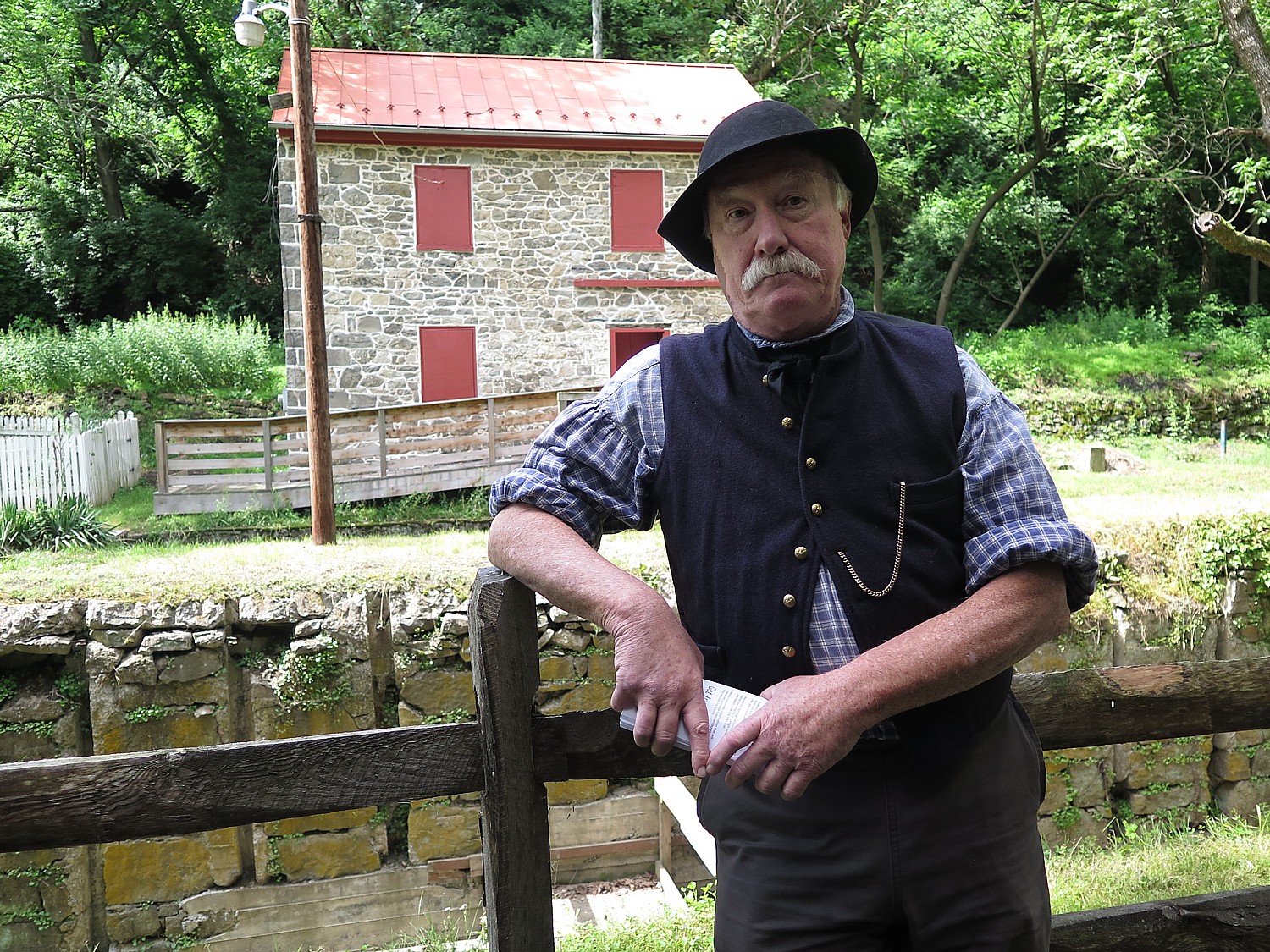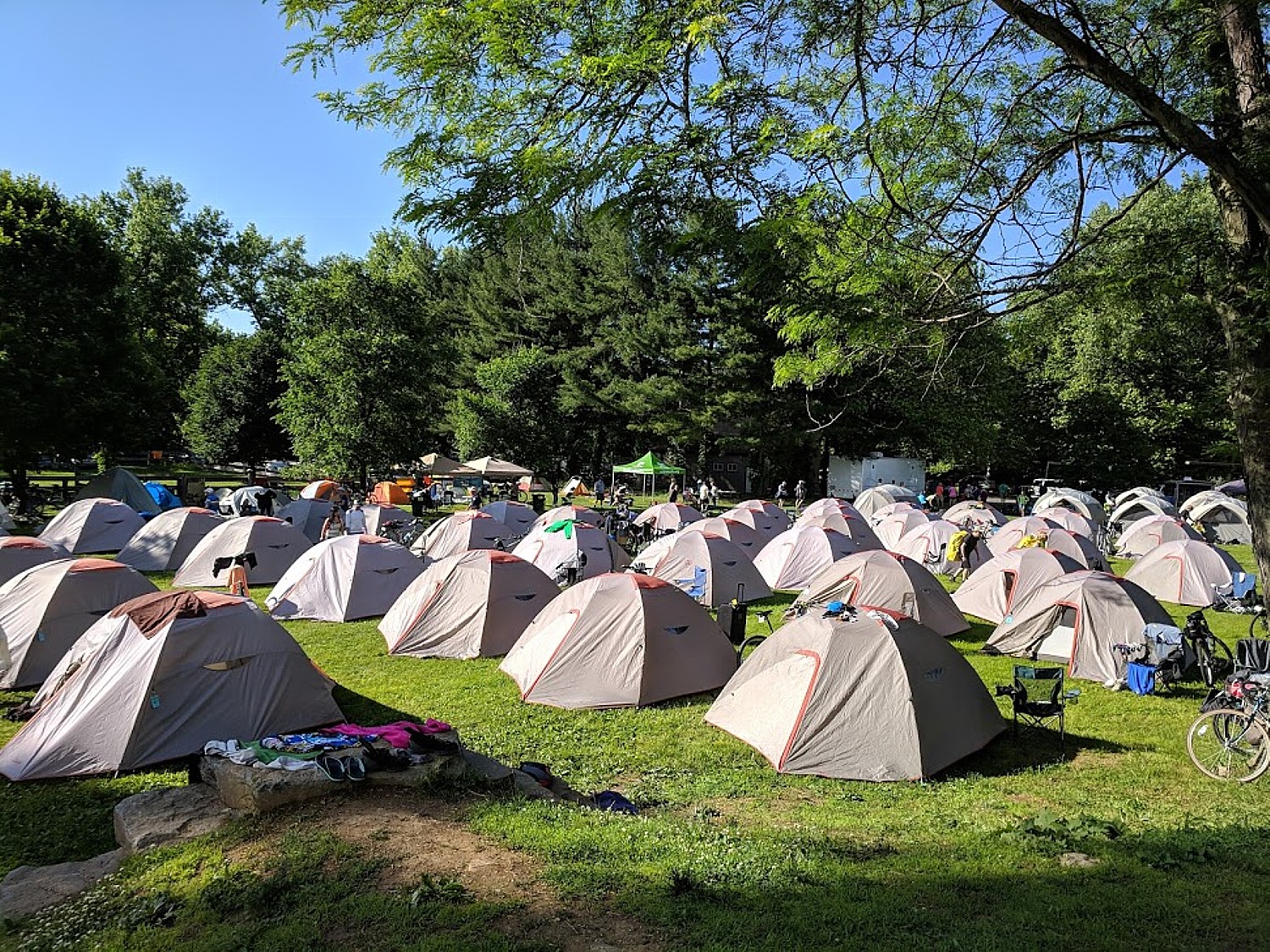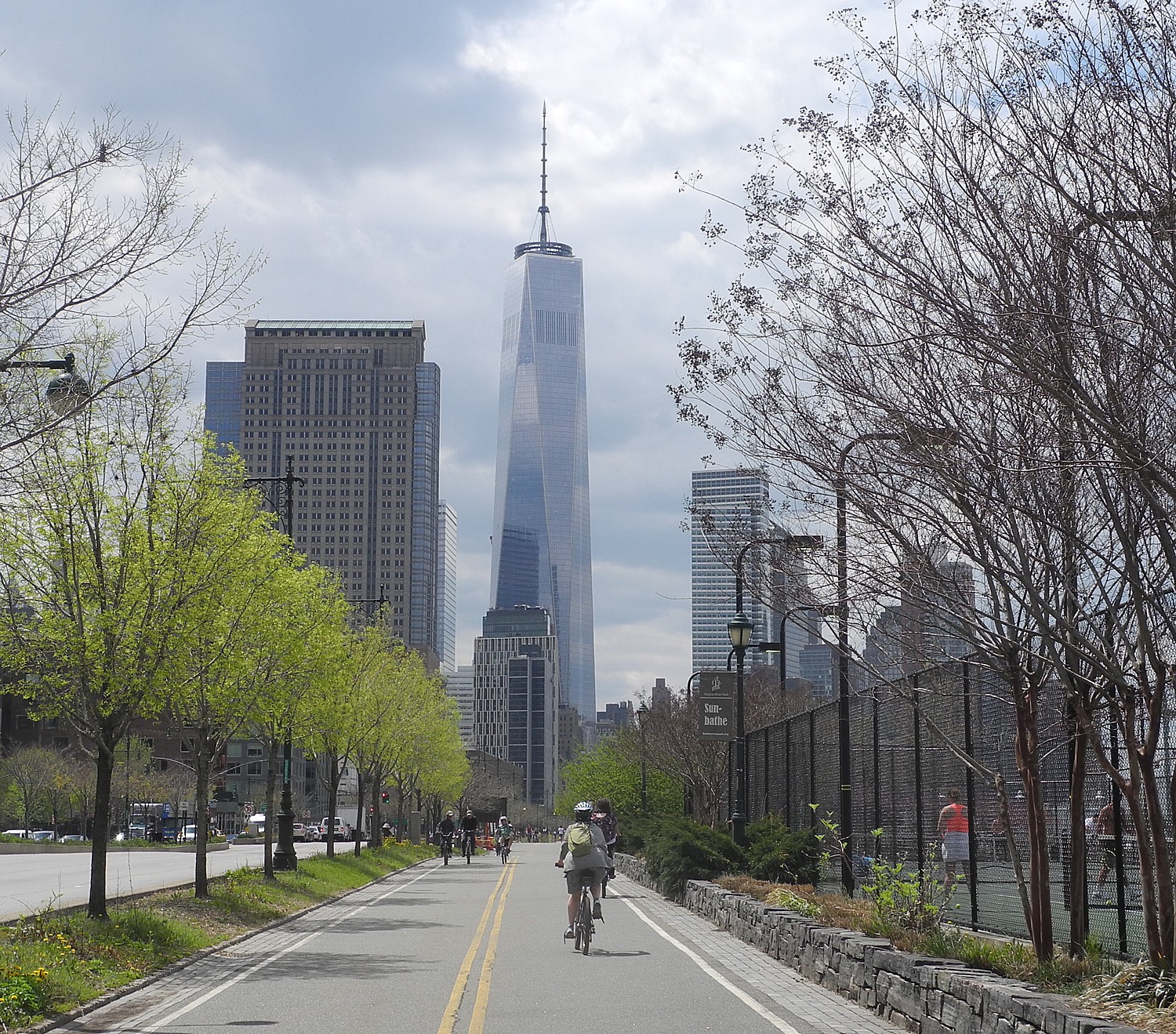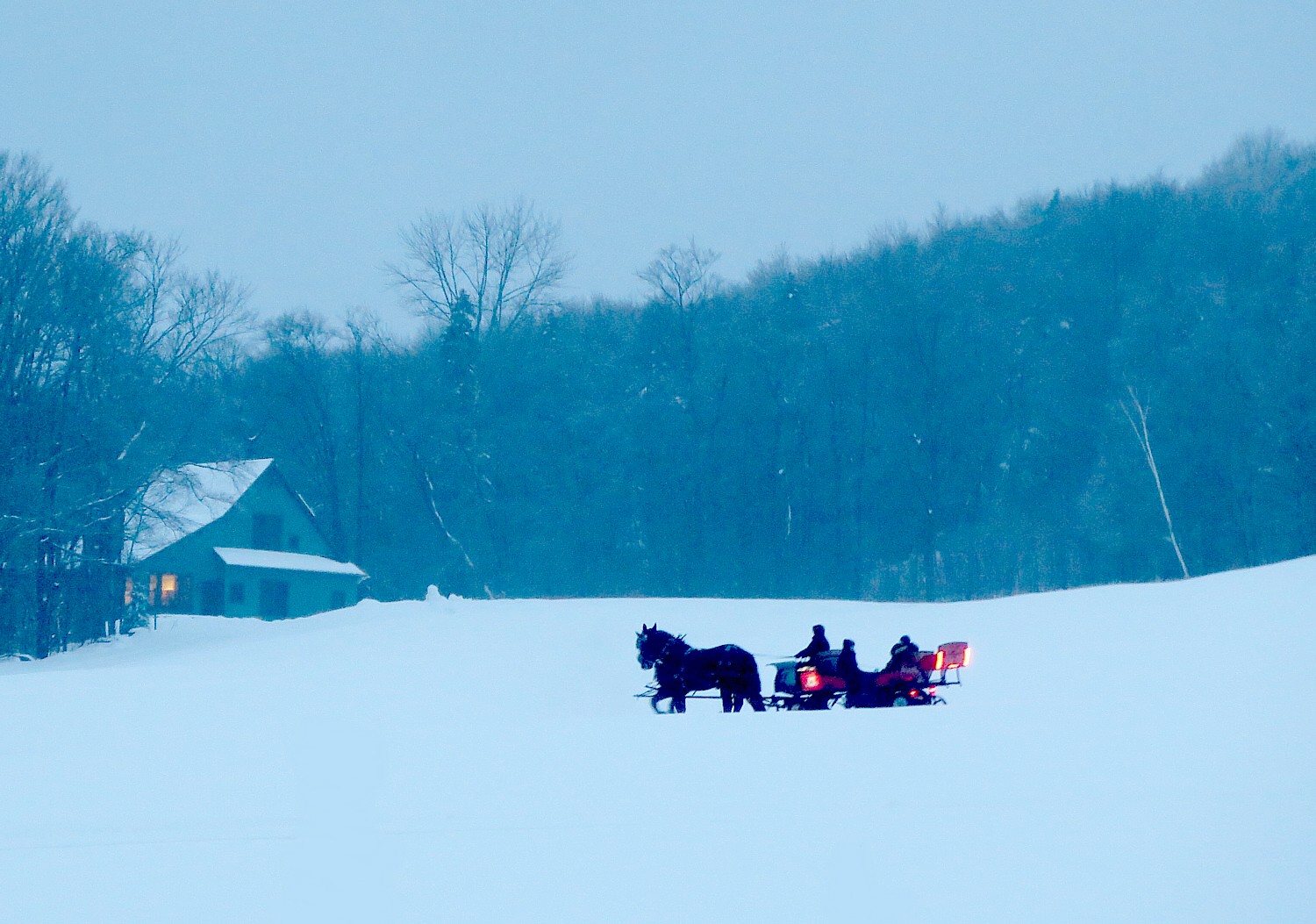
by Karen Rubin
Travel Features Syndicate, goingplacesfarandnear.com
There are lodgings you choose to hang your hat after skiing, and then there are lodgings you choose because they are absolutely enchanting, especially for the winter holidays, which have the added delight of providing proximity to great skiing – ideal for families when not everyone’s cup of tea is skiing. Here are some of our favorite places to spend the winter holidays:
Mountain Top Inn & Resort, where we had the most delightful Christmas last year, is breathtakingly enchanting, complete with rides on a horse-drawn sleigh gliding across its expansive fields, a Currier & Ives landscape come to life. The setting, on 350 acres with a 740-acre lake, and ringed by the Green Mountain National Forest, offers its own 60 km cross-country ski trail network; a small old-fashioned (natural) skating pond; snowshoeing (twilight tours available); snowmobiling; spa; hot tub; fire pits; and the coziest fireplaces. It’s also a 30 minute drive to Killington Mountain for downhill skiing (shuttle transportation available, 8:30 am, returning 4:30 pm; reserve in advance). Mountain Top Inn & Resort, 195 Mountain Top Road, Chittenden, Vermont 05737, 802-483-2311, www.MountainTopInn.com.
The Sagamore, a grand historic hotel dating back to the 1880s that sits on a private 70-acre island on Lake George, is a sensational self-contained resort in one of America’s oldest tourism destinations. It is just 45 minutes from Gore Mountain, one of the best ski destinations in the East, certainly in New York State (a shuttle is provided); also nearby is West Mountain (downhill skiing, tubing, night skiing) and Crandall Park (cross country skiing, night skiing). The full-service resort offers ice skating, snowshoeing, indoor pool and spa, special holiday activities, (www.thesagamore.com, 866.384.1944)
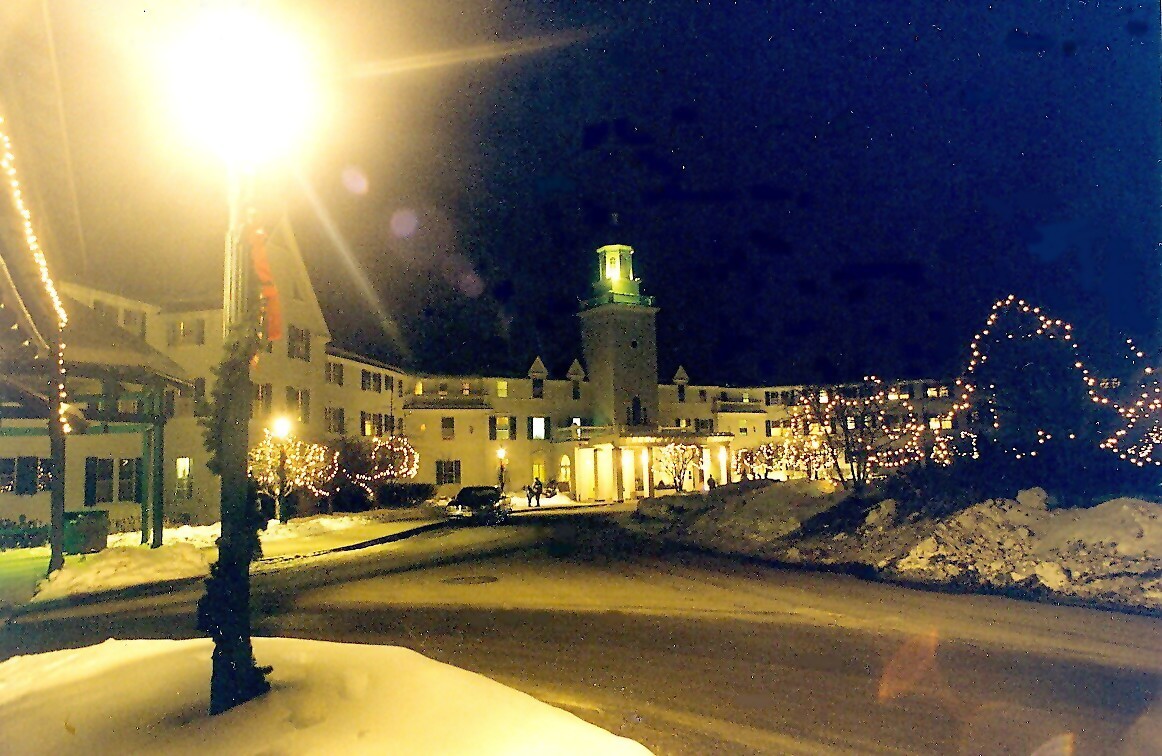
Mohonk Mountain House has been enchanting guests for more than 100 years. Founded by the Smiley Family in 1869, the Victorian castle resort, a National Historic Landmark, is set on cliffs overlooking a lake, nestled in the Hudson Valley surrounded by 40,000 acres of pristine forest, only 90 miles north of New York City. Mohonk offers a world-class 30,000 sq. ft. “eco-friendly” spa, indoor pool, a spectacular skating pavilion, rock climbing, 85 miles of trails for snowshoeing and cross-country skiing. New winter “wellness” programming is designed to help guests combat the “winter blues” and embrace the beauty of the season, with new mindfulness offerings that include fireside meditation, winter forest bathing and mindfulness lectures. If you can pull yourself away from its warm embrace, downhill skiing in the Catskills (Hunter Mountain, Belleayre, Windham) is an hour away. (844-207-8372, www.mohonk.com)
Now an Omni Hotels resort, the elegant Mount Washington Hotel, “a favorite New England retreat of presidents, poets and celebrities,” is just across the road from New Hampshire’s largest ski area, Bretton Woods (yes, that famous mountain hotel where world leaders signed the 1944 Treaty of Bretton Woods ending the gold standard in, fittingly, the Gold Room), with numerous trails and glades and three terrain parks. The grand resort has its own cross-country skiing on the golf course; one of the longest zip line tours in New England (year-round); a full-service 25,000 sq. ft. spa; two 4-diamond dining rooms (one is a former speakeasy) and sleigh rides. (www.omnihotels.com/hotels/bretton-woods-mount-washington)
Stockbridge, Massachusetts is another utterly picturesque New England village which is like a Norman Rockwell painting of Americana – in fact, its Main Street is immortalized in Rockwell’s “Stockbridge Main Street at Christmas” that includes the Red Lion Inn, where we stayed one Christmas – so much character! The Red Lion has been welcoming travelers to the Berkshires since 1773, one of New England’s few inns that has been operated continuously since before 1800. It is beyond charming – with early American furnishings, much of which has been in place for a century. It has hosted five presidents and other notables including Nathaniel Hawthorne, William Cullen Bryant, and Henry Wadsworth Longfellow. And much to do in Stockbridge, including the not-to-be-missed visit to the Norman Rockwell Museum, as well as Arrowhead Museum, the home of Herman Melville, in Pittsfield. (www.redlioninn.com).
We were able to combine our delightful holiday stay at the Red Lion with downhill skiing and snowboarding at Jiminy Peak Mountain Resort, the largest ski and snowboard resort in southern New England (37 Corey Road, Hancock MA 01237, www.jiminypeak.com, 413-738-5500).
A great source for fascinating places is Historic Hotels of America, www.historichotels.org and www.historichotelsworldwide.com, where you can find the perfect destination hotel or resort, intimately connected to the heritage, the people, the personality of the place, wherever you are headed.
Skiing, a Great Way to Spend the Holidays
Skiing (and snowboarding) is the great equalizer for families, something that is adventurous and gets the adrenalin rushing, where you feel a satisfied sense of accomplishment, and where kids can show up their parents. The resorts, especially the self-contained ones built around a small village with cute cafes and boutiques, all do a superb job of being festive. And there’s nothing better after a vigorous, bracing day on the slopes, than coming back and getting cozy in the condo with hot chocolate, or smore’s over a firepit, or a steamy Jacuzzi, or setting out for the skating rink or hopping a gondola to a mountaintop restaurant.

Park City, Utah, goes all out for the holidays and the town itself is utterly charming with sensational restaurants, boutiques, and you can fly out in the morning to Salt Lake City and be on the slopes, just 35 minutes away, by 1 pm. Park City Mountain celebrates the holiday season with Snowfest: a 16-day winter festival, Dec. 22-Jan. 6, featuring après ski events, musical acts, village entertainers, and activities including ice sculptures, s’mores roasting, meet-and-greets with the avalanche dogs and more. Activities will be presented at both the Park City Mountain Village and Canyons Village each day. On Monday, Dec. 24, Park City’s 56th annual Christmas Eve Torchlight Parade takes place, a tradition as old as the resort itself, when 100 Park City instructors ski down with lit torches creating a beautiful scene on the Mountain, joined by Santa Claus. The resort, the largest in the US with 7300 acres of terrain, two distinct base areas, nine hotels, two dozen restaurants and a new eight-passenger gondola, does an excellent job of interconnecting with Park City itself, a most charming Western town. Book 7 days in advance online for discounts on lift tickets; check out holiday packages, events and lodging and updates on terrain and weather reports at ParkCityMountain.com. (Also visit snow.com for info on all the Vail Resorts.)

The Hyatt Centric at the Canyons base, which has been a superb lodging for our stay and has its own lift for ski in/out convenience, and is just a five-minute walk to the shops and restaurants, let us use the outdoor heated pool, hot tubs, sauna and lockers after we were checked out. Our two-bedroom condo (the hotel has 27 two-bedroom suites, which can be turned into 3 bedroom suites, and 15 one-bedroom suites) is unbelievably spacious, outfitted with every possible amenity including a full-kitchen, a dining table that seats eight, three TVs, a Jacuzzi bathtub in the master bedroom, four balconies, windows everywhere there open up to the gorgeous outdoors, and washer/dryer (so convenient when you ski).The hotel also offers a free nighttime shuttle into historic Park City (parkcity.centric.hyatt.com).
Similarly, Lake Placid is a charming village that is the hub for Whiteface in the Adirondacks in upstate New York. Plenty to do, from the Olympic ice skating oval and museum downtown, to Olympic venues (you can even do bobsled, skeleton, biathalon, go up the Ski Jump towers, cross-country – even if there is someone in the family who doesn’t ski, or even if do, there is so much to enrich a trip. (Try to also fit in a hike through Ausable Chasm, incredible in winter). It’s not for nothing SKI Magazine named Lake Placid #1 ski town for Off-Hill activities.

We loved our festive holiday stay at the Golden Arrow Lakeside Resort, which offers a shuttle bus up to Whiteface, but also is a hub for all that Lake Placid offers: walking distance to the Olympic Oval ice skating rink and museum or ice skate on Mirror Lake just outside the resort; lovely shops and restaurants, and the local “toboggan roller coaster.” Also dog-sledding across the frozen surface of Mirror Lake and guided snowshoeing at Mt. Van Hoevenberg. (www.golden-arrow.com, 844-209-8080)
Other favorite New York State ski destinations: Gore Mountain in the Adirondacks (North Creek is a delightful village to stay), Belleayre, Windham, Hunter Mountain in the Catskills. (See Ski New York, www.iskiny.com, for more ideas.)
Other favorites for the holiday vibe as well as great skiing: Smugglers Notch (a complete, self-contained mountain destination that is tops for families), Mount Snow, Stratton (now part of Ikon Pass) and Okemo (now part of Vail Resorts’ Epic Pass) in the Northeast (see SkiVermont.com); Heavenly and Northstar around Lake Tahoe, California; Vail, Breckenridge (a historic town), Keystone Resort (sensational for families, easy to reach from Denver International Airport) in Colorado. Great source for ski holidays, Ski.com, a ski-specializing travel agency.
Warmer-Weather Winter Favorites
St. Simons Island is one of Georgia’s Golden Isles, lying midway between Savannah, Georgia and Jacksonville, Florida. The islands are a popular resort playground, offering a mix of natural beauty, rich history and quaint charm, coupled with the allure of inviting year-round weather (winter temps are in the low 60s). Visitors are enchanted by the natural canopy of moss-draped live oaks and the memorable Tree Spirits, hand-carved images of weathered faces that immortalize the area’s sailors who lost their lives at sea. The King and Prince, a member of Historic Hotels of America, offers a complete resort experience, including oceanfront dining, beachfront activities to horseback riding, tennis, biking and fishing. A variety of tours are available that provide samplings of the area’s history and culture, whether by foot, bike, trolley or boat.There are five oceanfront pools including a heated pool; enjoy golf at its famous The King and Prince Golf Course, and tennis. What I especially love is the opportunity to explore St. Simons – especially by bike. There are also dolphin cruises, shrimp boat excursion, kayaking, historic trolley tours of the island. Take time to explore Fort Frederica National Monument (which was an entire settlement, dating from 1736), Christ Church, and St. Simons Lighthouse & Museum. (www.kingandprince.com, 800-342-0212; member of Historic Hotels of America, historichotels.org.)
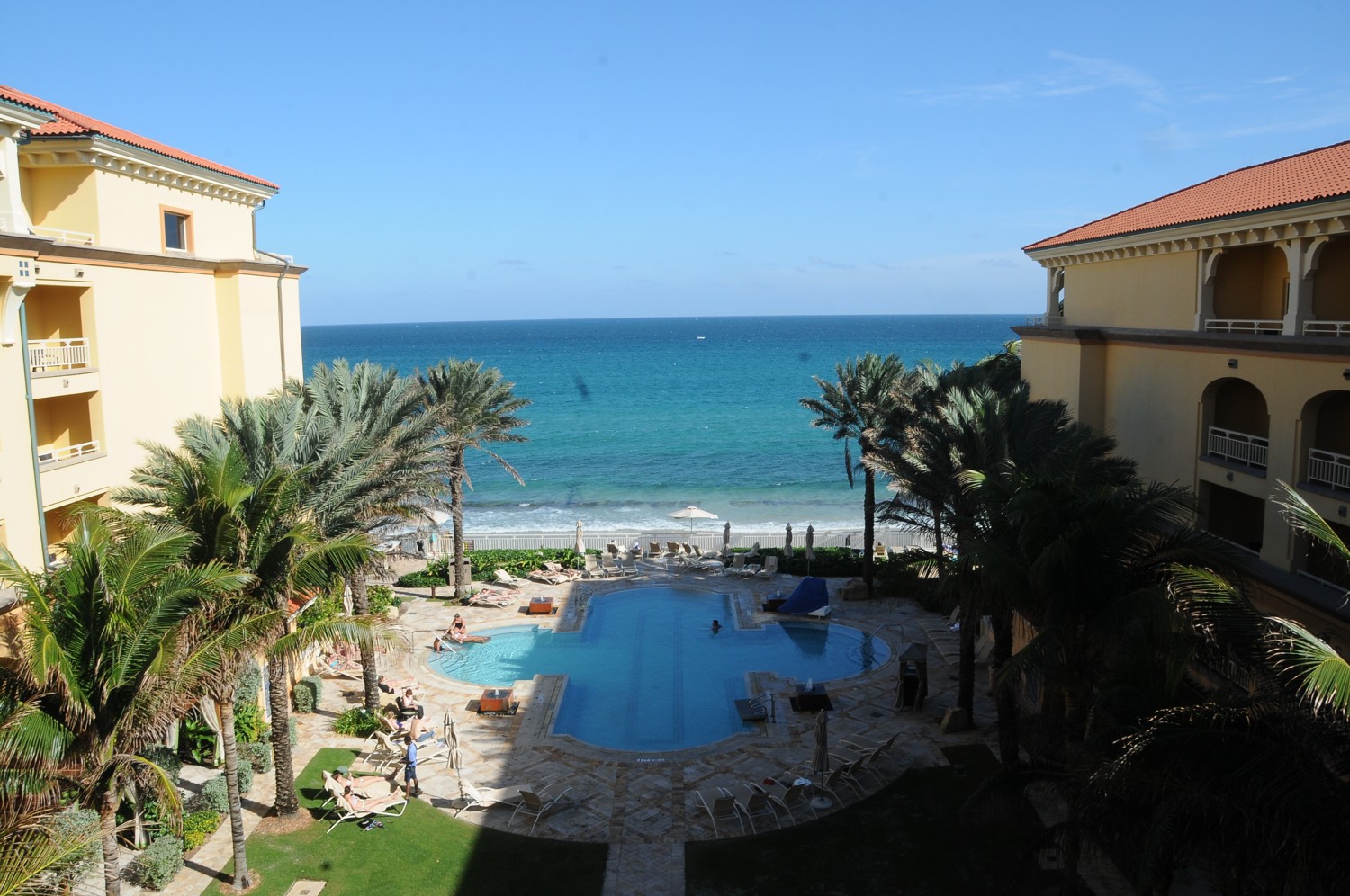
Eau Palm Resort in Manalapan, on Palm Beach Island, is a very special place. An intimate ocean retreat, it is both luxurious and comfortable; traditional and modern; playful and indulgent. Situated on the sweeping back drop of Florida’s Gold Coast with seven private Atlantic beachfront acres, magnificently landscaped with lush gardens and exquisite pools, it is one of only two Forbes Five-Star resorts in Palm Beach and eight in Florida. The award-winning Eau Spa is not to be missed. The resort offers an imaginative array of activities, from stand-up paddleboarding, to snorkeling in aquamarine waters, to surfing lessons, tennis. Borrow a complimentary cruiser bike to explore Palm Beach on a fabulous recreational trail. Palm Beach also offers many wonderful museums and historic attractions also, like the Flagler Museum; try to fit in a visit to the Palm Beach Zoo if you can pull yourself from the beach and the stunning pools. (www.eaupalmbeach.com, 800-328-0170).
One of our favorite places is the Colony Hotel & Cabana Club, Delray Beach, Florida – if Cole Porter were a hotel, it would be this one, and just steps away from Delray Beach (I think one of the nicest, most scenic beaches on the Florida’s Atlantic coast); the hotel even has its own private beachfront country club. Delray Beach is a sumptuous confection of art and culture, once voted “America’s Most Fun Small Town.” Among the features are complimentary breakfast buffet; wifi at hotel & club; fitness room; weekend live entertainment; walk to beach and access to private beach club with a saltwater pool). (www.thecolonyhotel.com, 561-276-4123, 800-552-2363; a member of Historic Hotels of America, historichotels.org.)
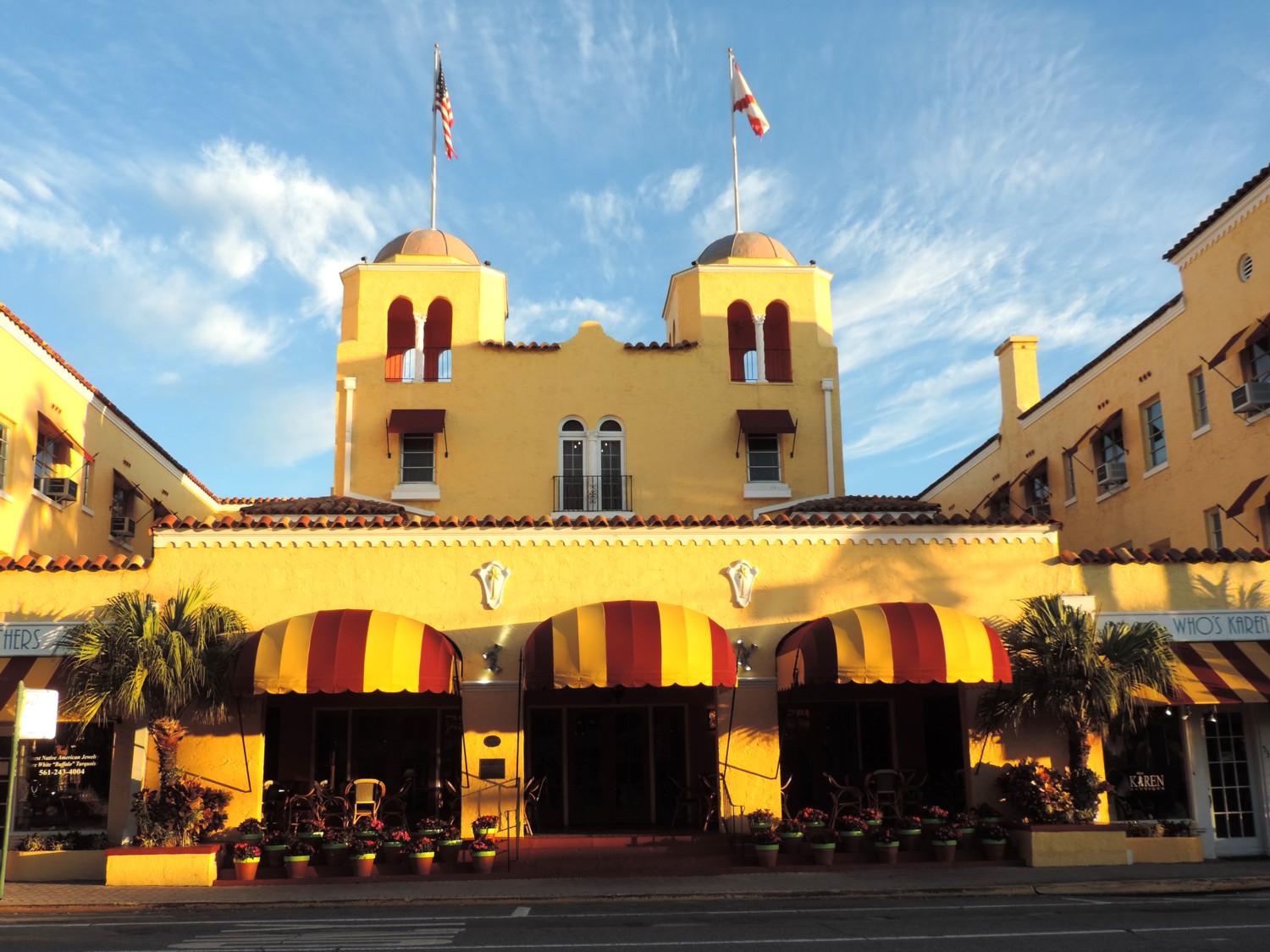
Another way to get into the spirit of “America’s Most Fun Small Town” is a stay at the Crane’s BeachHouse Hotel & Tiki Bar, which puts you right in the middle of all the activity Delray Beach offers, including a short walk to the beach, and yet makes you feel so far away, in some tranquil, private tropical retreat. It’s whimsical and fun. A fabulous buffet breakfast is served under the thatch roof of the tiki bar. (cranesbeachhouse.com, 561-278-1700, 866-372-7263).
Leave time to explore Gumbo Limbo Nature Center, Wakodahatchee (best birding anywhere), Loxahatchee (kayak or canoe in the Everglades, look for alligators!) and Morikami Museum & Japanese Gardens.
The Broadmoor in Colorado Springs is wrapping up its centennial celebrations with the recent unveiling of its largest, grandest holiday gingerbread display ever, a 13 ½-foot-tall, 11×11-120-square-foot gingerbread replica of the original 1918 Broadmoor resort. Situated at the gateway to the Colorado Rocky Mountains in Colorado Springs, The Broadmoor and its Wilderness Experience properties of The Ranch at Emerald Valley, Cloud Camp and Fishing Camp encompass 5,000 acres. The resort campus has 784 rooms, suites and cottages. It includes championship golf courses, a Forbes Five-Star spa and fitness center, indoor pool, nationally recognized tennis staff and program, 24 retail boutiques and 10 restaurants and 10 additional cafes and lounges, including Colorado’s only Forbes Five-Star and AAA Five-Diamond restaurant Penrose Room. Other activities include falconry, guided mountain biking, hiking, rock-climbing tours, fly-fishing, paintball and more. The Broadmoor owns and manages attractions that include Seven Falls and The Broadmoor Soaring Adventure zip-line courses. During the winter season, Broadmoor guests may choose from a wide selection of complimentary weekend activities and classes designed to enlighten, excite, educate—or simply enjoy, including cooking classes, wine and spirits demos, fly casting instruction, golf instruction, dance classes, fitness classes. Holiday activities include Christmas dining events, face painting, carnival games, laser tag, and story time. Nearby activities include: Bear Creek Nature Center, Cave of the Winds, Cheyenne Mountain Zoo, Children’s Museum, Florissant Fossil Beds, Hiking in North Cheyenne Canyon, Manitou Cliff Dwellings, ProRodeo Hall of Fame, The Rocky Mountain Dinosaur Resource Center, Royal Gorge Bridge, World Figure Skating Museum and Hall of Fame, The Broadmoor Seven Falls, Western Museum of Mining, and World Ice Skating Arena. (www.broadmoor.com, 855-634-7711)
More Holiday Travel Ideas
Cruising is a great way for families to be together for the holidays. Royal Caribbean Cruise Line, Disney Cruise Line, Norwegian Cruise Line and Princess Cruises do a superb job for families, with spectacular entertainment, waterparks and other mind-blowing activities on board and age-appropriate children’s activity programs and dining options. These floating resorts bring families together around activities and interests, dining and entertainment, adding in the incalculable delight in exploring new places. Our family treasures our multi-generational reunion on a Carnival cruise during Christmas week that called at Key West and Cozumel (Mexico), both such colorful places. Your travel agent can best advise on choosing a ship, a cruiseline, an itinerary; also visit cruisecritic.com.

Theme parks really deck the halls for the holidays, with parades, decorations, special activities. Our favorites include Universal Studios Orlando (loved our stay at the Loews Portofino), DisneyWorld (we had a really fun time at the Coco Key Hotel outside Disney, with its own waterpark and shuttle transport to the park), Busch Gardens Tampa (an outstanding zoo as much as it is a theme park) and Busch Gardens Williamsburg.
Close to home and an absolutely delightful theme park destination is Hershey Park (particularly great for families with younger kids): Its most festive seasonal event of the year, Hersheypark Christmas Candylane includes 4 million lights in a choreographed light show, 45 rides and coasters, entertainment, a visit with Santa. “Hersheypark Christmas Candylane Package,” available on select dates Nov. 16 – Dec. 29, includes one night accommodations at The Hotel Hershey (a grand, historic hotel) or Hershey Lodge resort and one day Hersheypark admission for the whole family, milk & cookie delivery, admission for 1 vehicle to Hershey Sweet Lights attraction. Also visit ZooAmerica, an 11-acre zoo with 200 animals open year-round. (www.hersheypark.com, 717-534-3900).
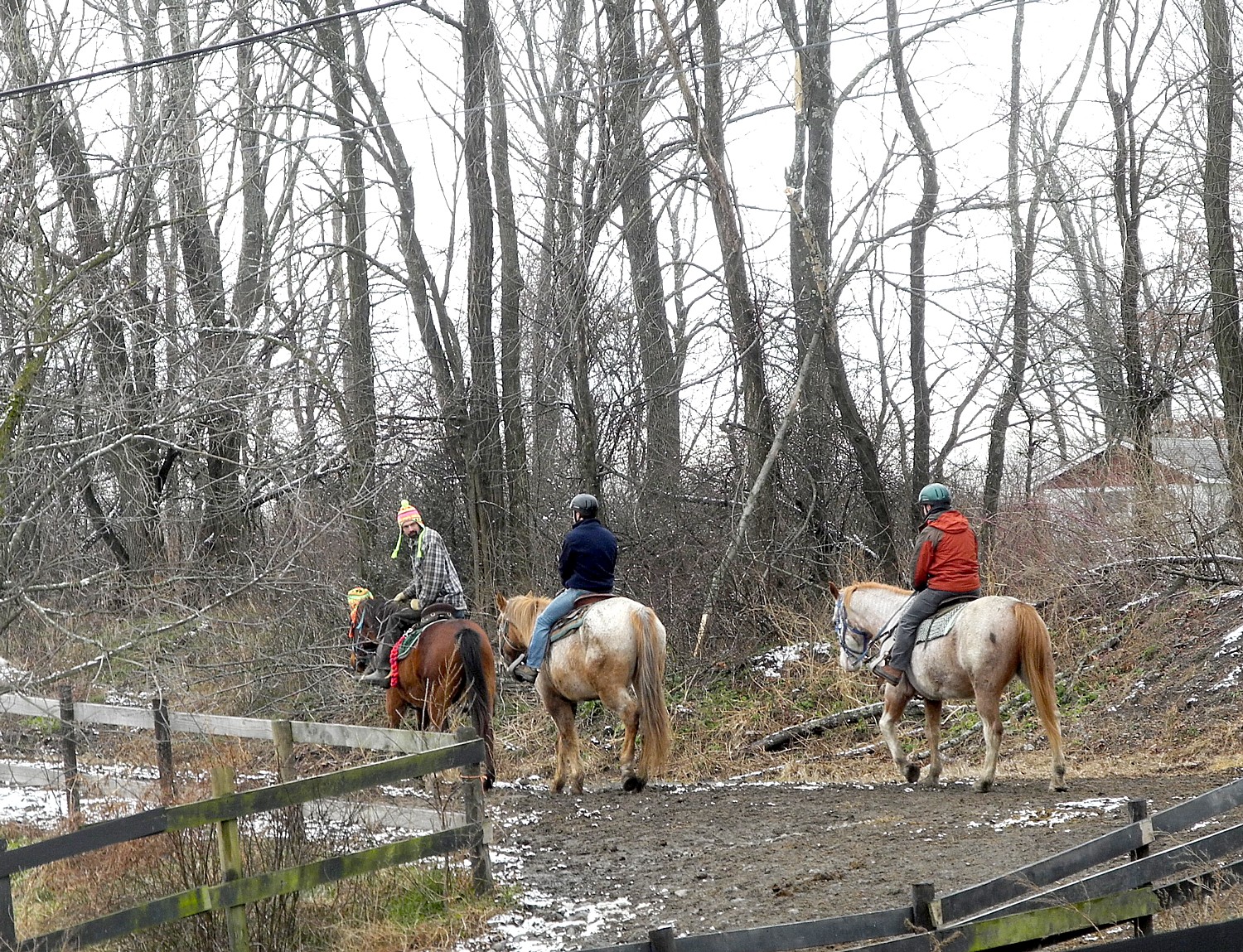
Dude ranches are a hoot; no matter your age, you wind up being a kid again. We had an entirely different holiday experience the Christmas we spent at Pine Ridge Dude Ranch (formerly the Pinegrove Ranch, was acquired this year by the former barn manager and two long-time guests). It’s an old-fashioned all-inclusive Catskills Mountains family resort with horses and a “Toy Story” cowboy vibe. So festive, warm, friendly and utterly delightful. It’s a nonstop giggle for children of all ages. Parents will slip back into their own childhoods while making new childhood memories for their own kids. There are activities galore, indoor pool, even laser tag, archery, tubing, iceskating, plus nightly shows and entertainment, three meals daily plus snacks and the holiday atmosphere is so special. Riding horses over snow-covered trails is really special. They regularly offer specials for Christmas and holiday times (some families return each year). Pine Ridge Dude Ranch, 30 Cherrytown Road, Kerhonkson N.Y. 12446, Ulster County, 845-626-7345, reservations@pineridgeduderanch.com, www.pineridgeduderanch.com.
Rocking Horse Ranch is a perennial family favorite. In the best tradition of Catskills resorts (all-inclusive) and dude ranch, it offers unlimited horseback riding, an indoor water park, live shows and entertainment, meals and tastings. Activities include bungee trampoline, rock climbing wall, mountain tubing, a spa and “exotic wildlife” exhibit (600 State Route 44/55, Highland, NY 12528, 800-647-2624, www.rockinghorseranch.com).
_____________________________
© 2018 Travel Features Syndicate, a division of Workstyles, Inc. All rights reserved. Visit goingplacesfarandnear.com, www.huffingtonpost.com/author/karen-rubin , and travelwritersmagazine.com/TravelFeaturesSyndicate/. Blogging at goingplacesnearandfar.wordpress.com and moralcompasstravel.info. Send comments or questions to FamTravLtr@aol.com. Tweet @TravelFeatures. ‘Like’ us at facebook.com/NewsPhotoFeatures



